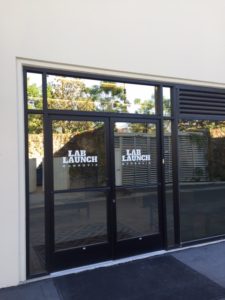
The current scientific landscape can best be thought of as a transitional one. With the proliferation of scientific innovation and the role that technology plays in our lives, along with the demand for more of these breakthroughs, comes the simultaneous challenge of balancing affordable lab space, funding and opportunity for young investigators and inventors to shape their companies and test novel projects. Los Angeles science incubator Lab Launch is trying to simplify the process through a revolutionary, not-for-profit approach that serves as a proof of concept for an eventual interconnected network of “discovery hubs”. Founder Llewelyn Cox sits down with ScriptPhD for an insightful podcast that assesses the current scientific climate, the backdrop that catalyzed Lab Launch, and why alternatives to traditional avenues of research are critical for fueling the 21st Century economy.
As science and biotechnology innovation go, we are, to put it in Dickensian terms, in the best of times and the worst of times.
On the one hand, we are in the midst of a pioneering golden age of discovery, biomedical cures and technological evolution. It seems that every day brings limitless possibility and unbridled imagination. Recent development of CRISPR gene-editing machinery will facilitate specific genome splicing and wholescale epigenetic insight into disease and function. Immunotherapy, programming the body’s innate immune system and utilizing it to eradicate targeted tumors, represents the biggest progress in cancer research in decades. For the first time ever, physicists have detected and quantified gravitational waves, underscoring Einsteins theory of gravity, relativity and how the space continuum expands and contracts. The private company SpaceX landed a rocket on a drone ship for the first time, enabling faster, cheaper launches and reusable rockets.
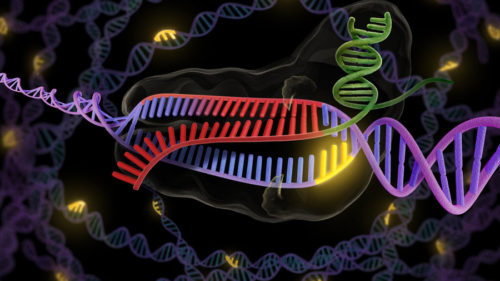
Despite these exciting and hopeful advancements, many of which have the potential to greatly benefit society and quality of life, there remain tangible challenges to fostering and preserving innovation. Academic science produces too many PhDs, which saturates the job market, stifles viable prospects for the most talented scientists and even hurts science in the long run. Exacerbating this problem is a shortage of basic research funding in the United States that represents the worst crisis in 50 years. And while European countries experience a similar pullback in grant availability, developing countries are investing in research as an avenue of future economic growth. High-risk, high-reward research, particularly from young investigators, is suppressed at the expense of “safe research” and already-wealthy, established labs. Conduits towards entrepreneurship are possible, many through commercializing academic findings, but few come without strings attached, start-up companies are in a 48% decline since the 1970s. With research and development stagnating at most big pharmaceutical companies and current biomedical research growth unsustainable, there is an unprecedented opportunity to disrupt the innovation pipeline and create a more robust economy.
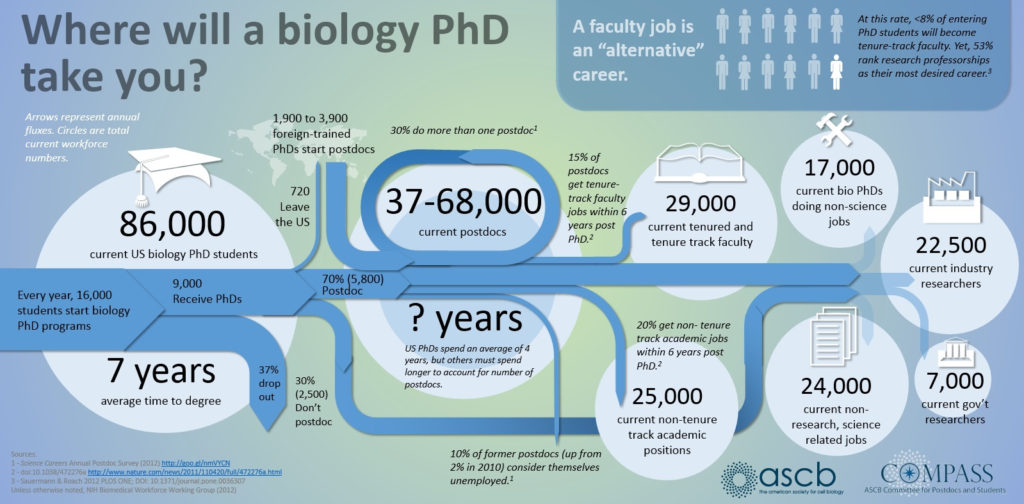
In an effort to boost discovery and development, there has been a permeation of venture capital accelerators and think-tank style early stage incubators from the technology sector into basic science; indeed it’s experiencing a proliferating boom. Affordable space, world-class facilities, access to startup capital and a opportunity to explore high-risk ideas — all are attractive to young academics and scientific entrepreneurs. Even pharmaceutical giants are spawning innovation arms as potential sources of future ideas. Large cities like New York are even using incubator space as a catalyst for growing a localized biotechnology-fueled economy. Such opportunities, however, don’t come without risk and collateral to innovators. As Mike Jones of science, inc. warns, the single biggest question that innovators must asses is: “Is the value I am getting equal to the risk I am saving, through equity?” Many incubators and accelerators act as direct conduits to academia and industry, both for talent recruitment and retention of intellectual material. In fact, the business model governing incubator space and asset allocation can often be nebulous, and sometimes further complicated by mandatory “collaborative” sharing not just of materials and space, but data and intellectual property. Even wealthy investors, who are now underwriting academic and private sector research, want a voice in the type of research and how it is conducted.
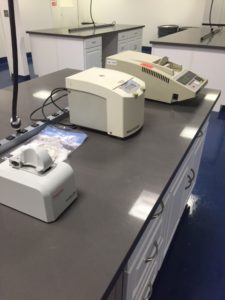
Amidst this idea-driven revolution was borne the concept of Lab Launch, a transformative permutation of incubator space for fostering pharmaceutical and biotechnology innovation. The fundamental principle behind Los Angeles-based Lab Launch is deceptively simple. As a not-for-profit endeavor, it provides simple, sleek and high-level equipment and space for life science and biotechnology experimentation. Because all shared equipment is donated as overflow from companies and laboratories that no longer need it, costs are minimized towards laboratory management fees and rental of facilities. As a stripped-down discovery engine model, this allows Lab Launch scientists to keep 100% of their intellectual property and equity, something that is virtually unheralded for young innovators at early-development stages. On a more complex level, the potential wide-scale benefits of Lab Launch (and future copycat spawns) are profound and resonant. In an industry where the Boston-San Francisco-San Diego triumvirate presents a near-hegemony for biotechnology funding, development and intellectual assets, the growth of simple, inexpensive science incubators in large cities carries tremendous economic upside. Critics might point out the lack of substantive guidance and elite think tank access of such a platform, yet 90% of all incubators and accelerators still fail, regardless. Moreover, selection criteria are often biased towards specific business interests or research aims that buoy academia and venture capital profiteers, which weed out the most high-risk ideas and participants. How, for example, would a scientist without a PhD or prestigious pedigree get access to a mainstream incubator lab space? How would a radically non-traditional idea or approach merit mainstream support or funding? A recent Harvard Business Review article suggests that lean start-ups with the most efficient, bare-bones development models, have far higher success rates and should be the template for driving an innovation-based economy. As elucidated in the podcast below, opening doors to facilitate proof-of-concept innovation and linking a virtual network of lab spaces will give rise to not just the next Silicon Valley, but the great scientific breakthroughs of tomorrow.
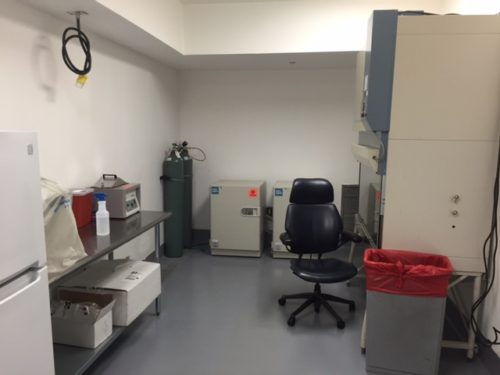
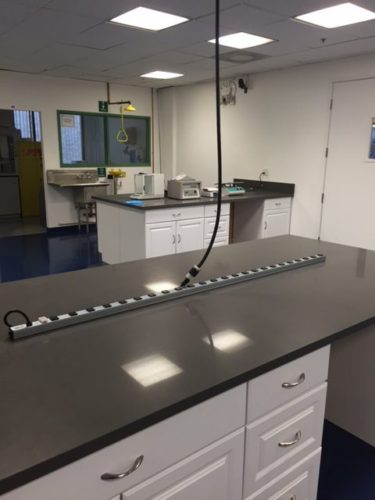
Lab Launch founder Dr. Llewellyn Cox sat down with ScriptPhD for a podcast interview to talk about his revolutionary not-for-profit startup incubator and the challenging scientific environment that inspired the idea. Among our topics of discussion:
•How lack of funding and overflow of PhDs in the current scientific climate stifles creativity and innovation
•Why biotechnology will cultivate exciting new industries in the 21st Century
•How no strings attached incubators like Lab Launch help give rise to Silicon Valleys of the future
•Why we should in fact be hopeful about how scientific progress is advancing
*****************
ScriptPhD.com covers science and technology in entertainment, media and advertising. Hire our consulting company for creative content development. Follow us on Twitter and Facebook. Subscribe to our podcast on SoundCloud or iTunes.
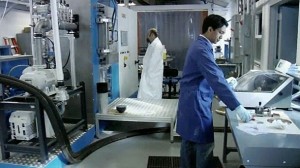
The last 25 years have brought an unprecedented level of scientific and technological advances, impacting virtually all dimensions of society, from communication and the digital revolution, to economics and food production to nanotechnology and medicine – and that’s just a start. The next few decades will rapidly expand this progress with exponential discovery and innovation, amidst more pressing global challenges than we’ve ever faced before. The opportunities to develop faster, better and cheaper products that improve modern living are limitless – Tesla electric cars, energy-saving fuels and machines, robotics – but they all share a common basic need for developing and studying materials in a more efficient manner. This will require a real-time acceleration of sharing, analytics and simulation through readily accessible databases. Essentially, an open-source wiki for materials scientists. In our in-depth article below, ScriptPhD.com explains why materials science is the most critical gateway towards 21st Century technology and how California startup company Citrine Informatics is providing revolutionary new information extraction software to create a crowdsourced, open access database available to any scientist.
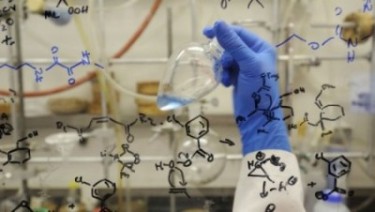
There has been a public access revolution of sorts transforming science. A necessary one, at that. Science funding is in crisis. The peer-review process is under heavy scrutiny. And scientists are turning to transparency to help. Some notable billionaires are circumventing public funding and privatizing science. Molecular biologist Ethan Perlstein has used crowdfunding to raise hundreds of thousands of dollars from the public at large for a basic research lab. Last fall, as the Ebola crisis gripped the world’s attention, an expert researcher at The Scripps Research Institute (where I received a PhD) appealed to public crowd funding to raise $100,000 for vaccine research. With platforms like Experiment, RocketHub and KickStarter proliferating support for science, the public at large has begun to serve as an important incubator of innovation. More importantly, researchers are increasingly rethinking traditional academic publishing and recognizing the value of open data sharing through publications and databases. The Public Library of Science (PLoS) is the biggest non-profit advocate and publisher of open access research. Mainstream journals like Science have begun publishing free web-based alternatives that are immediately accessible. Calls for unified data sharing have grown louder and more widespread. Even the FDA has announced plans for crowdsourcing a genomics research platform to improve efficiency of diagnostic and clinical tests and their analysis. Far from hindering the scientific process and output, these efforts have accelerated alternative means of funding, data acquisition and exchange, collaboration and ultimately, discovery.
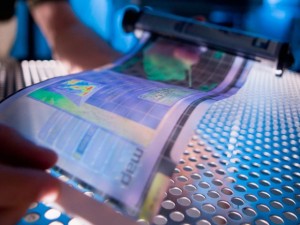
Think about virtually any practical aspect of life and it relies on materials. Transportation of any kind, Kevlar vests, sports equipment, communication devices, clothing, growing and making food… it’s impossible to think about modern society in even the most impoverished developing countries without them. Now think on a bigger scale. Superconductors. Carbon nanotubules. Graphene. The materials of the future that make even these breakthroughs obsolete. So crucial is materials science to all facets of economics, research and quality of life, that in 2011, the United States Government launched a Materials Genome Initiative. A partnership between the private sector industry, universities, and the government, its primary goal is to utilize a materials genome approach to cut the cost and time to market for basic materials products by 50%.

The only problem with materials research? Data. And lots of it. Aided largely by digital services and a proliferation of technology research – not to mention marketplace for the products that it makes possible – there is so much data produced today that the process of testing, developing, tweaking and inserting a material into a product takes about 20 years, according to the National Academy of Sciences. To combat this, materials scientists and engineers have growingly embraced a similar open access philosophy to that of life scientists. Leading science publisher Elsevier recently launched an infrastructure called “Open Data” to facilitate materials science data sharing across thirteen major publications. The Lawrence Berkeley National Laboratory just created the world’s largest database of elastic properties, a virtual gold mine for scientists working on materials that require mechanical properties for things like cars and airplanes. NASA has even opened a Physical Science Informatics database of all of its space station materials research in the hopes that the crowdsourcing accelerates engineering research discovery, applicable both to space and Earth.
Citrine Informatics, a startup company in California, is hoping to unify these concepts of data sharing and mining through open access web-based software (boosted by crowdsourcing) to build a comprehensive, open database of materials and chemical data. Essentially, Citrine is rolling out a cloud platform (Citrination) that will act as a digital middle man between data acquisition and product development. And rather than storing it in vastly differing locations under differing access guidelines, Citrination’s algorithms gather all available data (from publications to databases to publicly shared data from private companies) in order to show properties under different conditions, including when they might fail. A simple, mainframe registry database allows users to upload data, build customized data sets and see all known properties of a particular material under all different physical conditions (see below). Rater than testing and retesting internal materials data internally, thus lengthening R&D pipelines, research labs can simply model based on available information and adjust experiments accordingly.
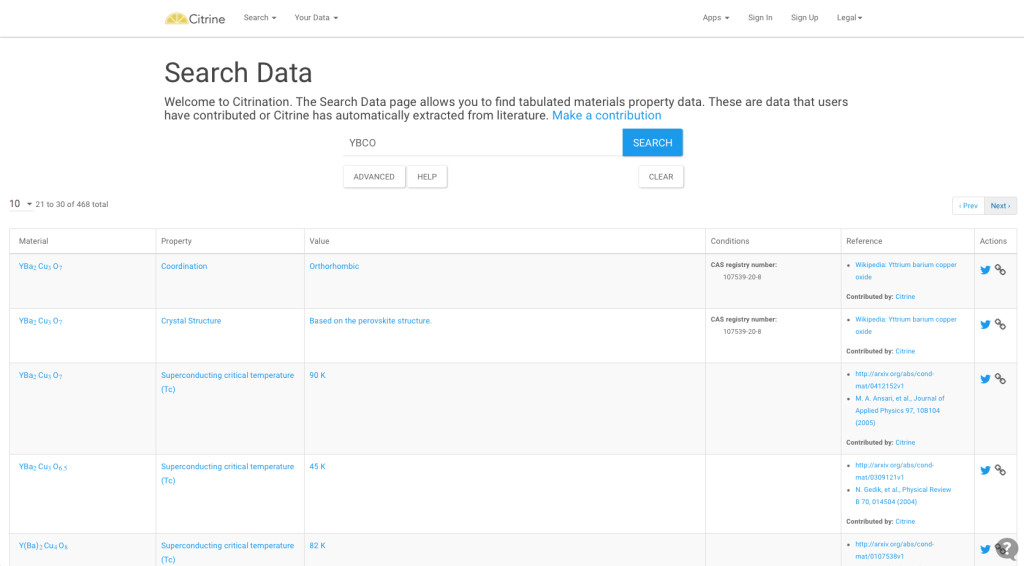
“What we do represents a big change in the status quo,” co-founder Bryce Meredig says. “A lot of the scientists in these industries don’t have a natural inclination to turn to software to solve these problems.” Until now. The software will be made free to not for profit research institutions and will sell to materials and chemical companies that want to avail themselves of the wealth of data. Citrine has used a large recent infusion of grant funding to raise their ambition beyond a database and towards applications like 3D printing, renewable energy technology (co-founder Greg Mulholland was recognized by Forbes as a 30 under 30 leader in energy) and the next generation of devices.
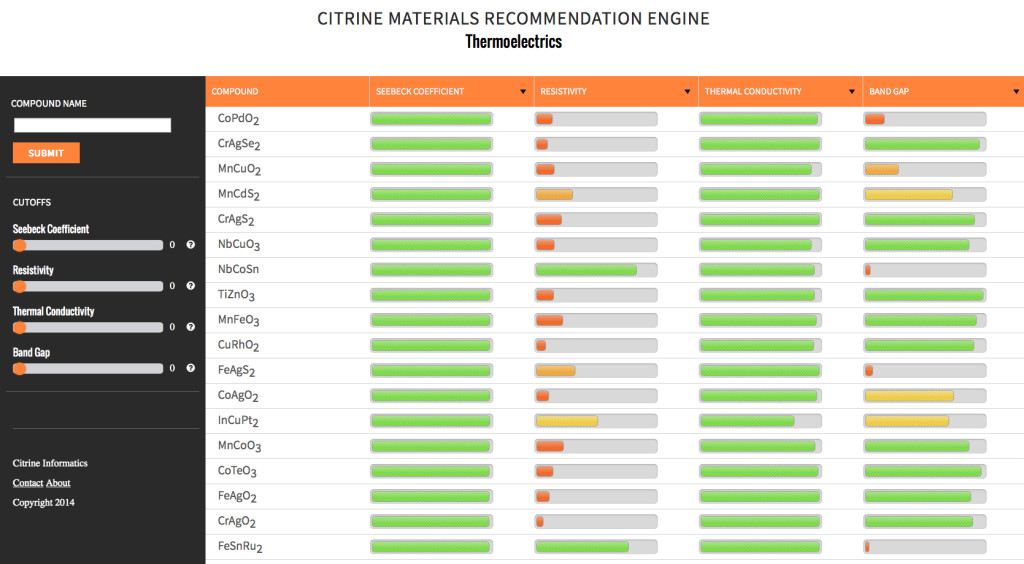
The practical benefits to society as a whole of extending open access and crowdsourcing to materials science are tremendous. On an individual level, virtually every computer and mobile device we put in our hands, every gadget and machine we buy in the future will depend on improved materials. On a more wide-scale level, materials will be at the forefront of solving the most complex, important challenges to our planet and its inhabitants, none more important than the energy crisis. Food production, water purification and distribution, transportation, infrastructure all will rely on creating sustainable energy. More ambitious endeavors such as space travel, medical treatments and advanced research collaborations will be even more reliant on new and improved materials. The faster that scientists, researchers and engineers are able to mine data from previous experiments, replicate it and design smarter studies based on computerized algorithms of how those materials behave, the faster they can produce breakthroughs in the laboratory and into the marketplace. The stakes are high. The scientific rewards are infinite. The time to open and use a free-access materials database is now.
This article was sponsored by Citrine Informatics.
*****************
ScriptPhD.com covers science and technology in entertainment, media and advertising. Hire our consulting company for creative content development. Follow us on Twitter and Facebook. Subscribe to our podcast on SoundCloud or iTunes.
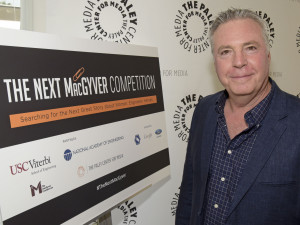
Engineering has an unfortunate image problem. With a seemingly endless array of socioeconomic, technological and large-scale problems to address, and with STEM fields set to comprise the most lucrative 21st Century careers, studying engineering should be a no-brainer. Unfortunately, attracting a wide array of students — or even appreciating engineers as cool — remains difficult, most noticeably among women. When Google Research found out that the #2 reason girls avoid studying STEM fields is perception and stereotypes on screen, they decided to work with Hollywood to change that. Recently, they partnered with the National Academy of Sciences and USC’s prestigious Viterbi School of Engineering to proactively seek out ideas for creating a television program that would showcase a female engineering hero to inspire a new generation of female engineers. The project, entitled “The Next MacGyver,” came to fruition last week in Los Angeles at a star-studded event. ScriptPhD.com was extremely fortunate to receive an invite and have the opportunity to interact with the leaders, scientists and Hollywood representatives that collaborated to make it all possible. Read our full comprehensive coverage below.
“We are in the most exciting era of engineering,” proclaims Yannis C. Yortsos, the Dean of USC’s Engineering School. “I look at engineering technology as leveraging phenomena for useful purposes.” These purposes have been recently unified as the 14 Grand Challenges of Engineering — everything from securing cyberspace to reverse engineering the brain to solving our environmental catastrophes to ensuring global access to food and water. These are monumental problems and they will require a full scale work force to fully realize. It’s no coincidence that STEM jobs are set to grow by 17% by 2024, more than any other sector. Recognizing this opportunity, the US Department of Education (in conjunction with the Science and Technology Council) launched a five-year strategic plan to prioritize STEM education and outreach in all communities.
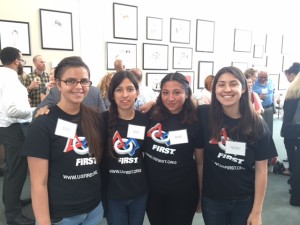
Despite this golden age, where the possibilities for STEM innovation seem as vast as the challenges facing our world, there is a disconnect in maximizing a full array of talent for the next generation of engineers. There is a noticeable paucity of women and minority students studying STEM fields, with women comprising just 18-20% of all STEM bachelor’s degrees, regardless of the fact that more students are STEM degrees than ever before. Madeline Di Nono, CEO of the Geena Davis Institute on Gender in Media and a judge at the Next MacGyver competition, boils a lot of the disinterest down to a consistent lack of female STEM portrayal in television and film. “It’s a 15:1 ratio of male to female characters for just STEM alone. And most of the science related positions are in life sciences. So we’re not showing females in computer science or mathematics, which is where all the jobs are going to be.” Media portrayals of women (and by proxy minorities) in science remains shallow, biased and appearance-focused (as profiled in-depth by Scientific American). Why does this matter? There is a direct correlation between positive media portrayal and STEM career participation.
It has been 30 years since the debut of television’s MacGyver, an action adventure series about clever agent Angus MacGyver, working to right the wrongs of the world through innovation. Rather than using a conventional weapon, MacGyver thwarts enemies with his vast array of scientific knowledge — sometimes possessing no more than a paper clip, a box of matches and a roll of duct tape. Creator Lee Zlotoff notes that in those 30 years, the show has run continuously around the world, perhaps fueled in part by a love of MacGyver’s endless ingenuity. Zlotoff noted the uncanny parallels between MacGyver’s thought process and the scientific method: “You look at what you have and you figure out, how do I turn what I have into what I need?” Three decades later, in the spirit of the show, the USC Viterbi School of Engineering partnered with the National Academy of Sciences and the MacGyver Foundation to search for a new MacGyver, a television show centered around a female protagonist engineer who must solve problems, create new opportunities and most importantly, save the day. It was an initiative that started back in 2008 at the National Academy of Sciences, aiming to rebrand engineering entirely, away from geeks and techno-gadget builders towards an emphasis on the much bigger impact that engineering technology has on the world – solving big, global societal problems. USC’s Yortsos says that this big picture resonates distinctly with female students who would otherwise be reluctant to choose engineering as a career. Out of thousands of submitted TV show ideas, twelve were chosen as finalists, each of whom was given five minutes to pitch to a distinguished panel of judges comprising of writers, producers, CEOs and successful show runners. Five winners will have an opportunity to pair with an established Hollywood mentor in writing a pilot and showcasing it for potential production for television.
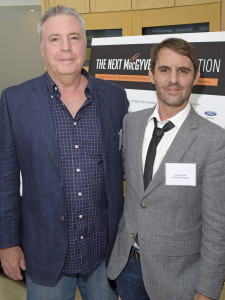
If The Next MacGyver feels far-reaching in scope, it’s because it has aspirations that stretch beyond simply getting a clever TV show on air. No less than the White House lent its support to the initiative, with an encouraging video from Chief Technology Officer Megan Smith, reiterating the importance of STEM to the future of the 21st Century workforce. As Al Roming, the President of the National Academy of Engineering noted, the great 1950s and 1960s era of engineering growth was fueled by intense competition with the USSR. But we now need to be unified and driven by the 14 grand challenges of engineering and their offshoots. And part of that will include diversifying the engineering workforce and attracting new talent with fresh ideas. As I noted in a 2013 TEDx talk, television and film curry tremendous power and influence to fuel science passion. And the desire to marry engineering and television extends as far back as 1992, when Lockheed and Martin’s Norm Augustine proposed a high-profile show named LA Engineer. Since then, he has remained a passionate advocate for elevating engineers to the highest ranks of decision-making, governance and celebrity status. Andrew Viterbi, namesake of USC’s engineering school, echoed this imperative to elevate engineering to “celebrity status” in a 2012 Forbes editorial. “To me, the stakes seem sufficiently high,” said Adam Smith, Senior Manager of Communications and Marketing at USC’s Viterbi School of Engineering. “If you believe that we have real challenges in this country, whether it is cybersecurity, the drought here in California, making cheaper, more efficient solar energy, whatever it may be, if you believe that we can get by with half the talent in this country, that is great. But I believe, and the School believes, that we need a full creative potential to be tackling these big problems.”
So how does Hollywood feel about this movement and the realistic goal of increasing its array of STEM content? “From Script To Screen,” a panel discussion featuring leaders in the entertainment industry, gave equal parts cautionary advice and hopeful encouragement for aspiring writers and producers. Ann Merchant, the director of the Los Angeles-based Science And Entertainment Exchange, an offshoot of the National Academy of Sciences that connects filmmakers and writers with scientific expertise for accuracy, sees the biggest obstacle facing television depiction of scientists and engineers as a connectivity problem. Writers know so few scientists and engineers that they incorporate stereotypes in their writing or eschew the content altogether. Ann Blanchard, of the Creative Artists Agency, somewhat concurred, noting that writers are often so right-brain focused, that they naturally gravitate towards telling creative stories about creative people. But Danielle Feinberg, a computer engineer and lighting director for Oscar-winning Pixar animated films, sees these misconceptions about scientists and what they do as an illusion. When people find out that you can combine these careers with what you are naturally passionate about to solve real problems, it’s actually possible and exciting. Nevertheless, ABC Fmaily’s Marci Cooperstein, who oversaw and developed the crime drama Stitchers, centered around engineers and neuroscientists, remains optimistic and encouraged about keeping the doors open and encouraging these types of stories, because the demand for new and exciting content is very real. Among 42 scripted networks alone, with many more independent channels, she feels we should celebrate the diversity of science and medical programming that already exists, and build from it. Put together a room of writers and engineers, and they will find a way to tell cool stories.

At the end of the day, Hollywood is in the business of entertaining, telling stories that reflect the contemporary zeitgeist and filling a demand for the subjects that people are most passionate about. The challenge isn’t wanting it, but finding and showcasing it. The panel’s universal advice was to ultimately tell exciting new stories centered around science characters that feel new, flawed and interesting. Be innovative and think about why people are going to care about this character and storyline enough to come back each week for more and incorporate a central engine that will drive the show over several seasons. “Story does trump science,” Merchant pointed out. “But science does drive story.”
The twelve pitches represented a diverse array of procedural, adventure and sci-fi plots, with writers representing an array of traditional screenwriting and scientific training. The five winners, as chosen by the judges and mentors, were as follows:
Miranda Sajdak — Riveting
Sajdak is an accomplished film and TV writer/producer and founder of screenwriting service company ScriptChix. She proposed a World War II-era adventure drama centered around engineer Junie Duncan, who joins the military engineer corps after her fiancee is tragically killed on the front line. Her ingenuity and help in tackling engineering and technology development helps ultimately win the war.
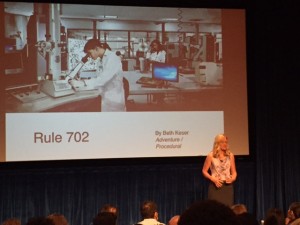
Beth Keser, PhD — Rule 702
Dr. Keser, unique among the winners for being the only pure scientist, is a global leader in the semiconductor industry and leads a technology initiative at San Diego’s Qualcomm. She proposed a crime procedural centered around Mimi, a brilliant scientist with dual PhDs, who forgoes corporate life to be a traveling expert witness for the most complex criminal cases in the world, each of which needs to be investigated and uncovered.
Jayde Lovell — SECs (Science And Engineering Clubs)
Jayde, a rising STEM communication star, launched the YouTube pop science network “Did Someone Say Science?.” Her show proposal is a fun fish-out-of-water drama about 15-year-old Emily, a pretty, popular and privileged high school student. After accidentally burning down her high school gym, she forgoes expulsion only by joining the dreaded, geeky SECs club, and in turn, helping them to win an engineering competition while learning to be cool.
Craig Motlong — Q Branch
Craig is a USC-trained MFA screenwriter and now a creative director at a Seattle advertising agency. His spy action thriller centered around mad scientist Skyler Towne, an engineer leading a corps of researchers at the fringes of the CIA’s “Q Branch,” where they develop and test the gadgets that will help agents stay three steps ahead of the biggest criminals in the world.
Shanee Edwards — Ada and the Machine
Shanee, an award-winning screenwriter, is the film reviewer at SheKnows.com and the host/producer of the web series She Blinded Me With Science. As a fan of traditional scientific figures, Shanee proposed a fictionalized series around real-life 1800s mathematician Ada Lovelace, famous for her work on Charles Babbage’s early mechanical general-purpose computer, the Analytical Engine. In this drama, Ada works with Babbinge to help Scotland Yard fight opponents of the industrial revolution, exploring familiar themes of technology ethics relevant to our lives today.
Craig Motlong, one of five ultimate winners, and one of the few finalists with absolutely no science background, spent several months researching his concept with engineers and CIA experts to see how theoretical technology might be incorporated and utilized in a modern criminal lab. He told me he was equal parts grateful and overwhelmed. “It’s an amazing group of pitches, and seeing everyone pitch their ideas today made me fall in love with each one of them a little bit, so I know it’s gotta be hard to choose from them.”
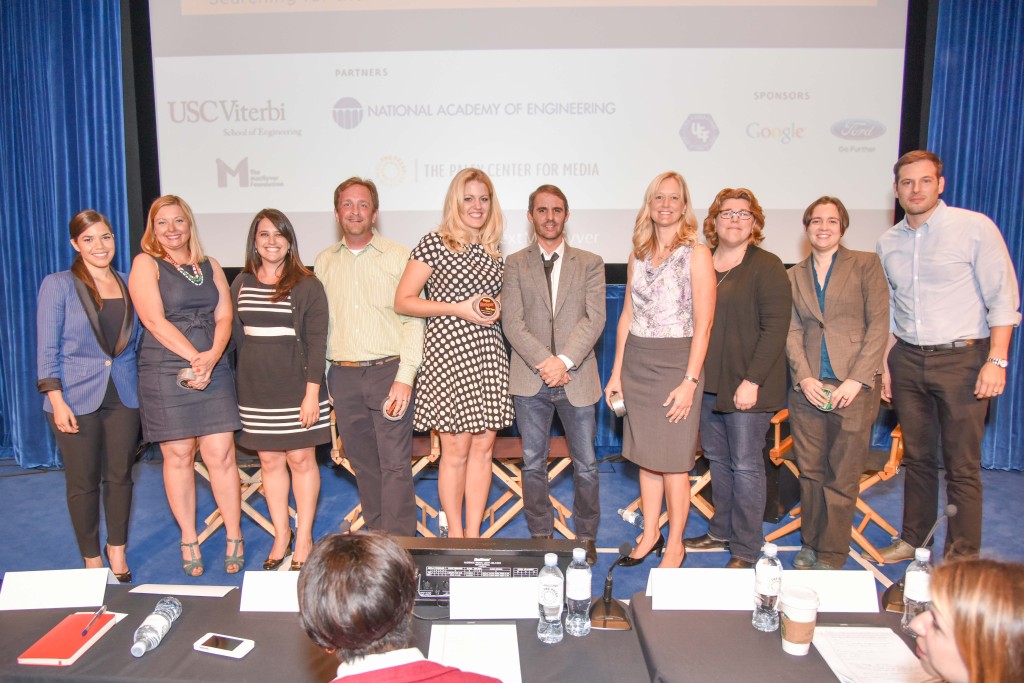
Whether inspired by social change, pragmatic inquisitiveness or pure scientific ambition, this seminal event was ultimately both a cornerstone for strengthening a growing science/entertainment alliance and a deeply personal quest for all involved. “I don’t know if I was as wrapped up in these issues until I had kids,” said USC’s Smith. “I’ve got two little girls, and I tried thinking about what kind of shows [depicting female science protagonists] I should have them watch. There’s not a lot that I feel really good sharing with them, once you start scanning through the channels.” Motlong, the only male winner, is profoundly influenced by his experience of being surrounded by strong women, including a beloved USC screenwriting instructor. “My grandmother worked during the Depression and had to quit because her husband got a job. My mom had like a couple of options available to her in terms of career, my wife wanted to be a genetic engineer when she was little and can’t remember why she stopped,” he reflected. “So I feel like we are losing generations of talent here, and I’m on the side of the angels, I hope.” NAS’s Ann Merchant sees an overarching vision on an institutional level to help achieve the STEM goals set forth by this competition in influencing the next generation of scientist. “it’s why the National Academy of Sciences and Engineering as an institution has a program [The Science and Entertainment Exchange] based out of Los Angeles, because it is much more than this [single competition].”
Indeed, The Next MacGyver event, while glitzy and glamorous in a way befitting the entertainment industry, still seemed to have succeeded wildly beyond its sponsors’ collective expectations. It was ambitious, sweeping, the first of its kind and required the collaboration of many academic, industry and entertainment alliances. But it might have the power to influence and transform an entire pool of STEM participants, the way ER and CSI transformed renewed interest in emergency medicine and forensic science and justice, respectively. If not this group of pitched shows, then the next. If not this group of writers, then the ones who come after them. Searching for a new MacGyver transcends finding an engineering hero for a new age with new, complex problems. It’s about being a catalyst for meaningful academic change and creative inspiration. Or at the very least opening up Hollywood’s eyes and time slots. Zlotoff, whose MacGyver Foundation supported the event and continually seeks to promote innovation and peaceful change through education opportunities, recognized this in his powerful closing remarks. “The important thing about this competition is that we had this competition. The bell got rung. Women need to be a part of the solution to fixing the problems on this planet. [By recognizing that], we’ve succeeded. We’ve already won.”
The Next MacGyver event was held at the Paley Center For Media in Beverly Hills, CA on July 28, 2015. Follow all of the competition information on their site. Watch a full recap of the event on the Paley Center YouTube Channel.
*****************
ScriptPhD.com covers science and technology in entertainment, media and advertising. Hire our consulting company for creative content development. Follow us on Twitter and Facebook. Subscribe to our podcast on SoundCloud or iTunes.
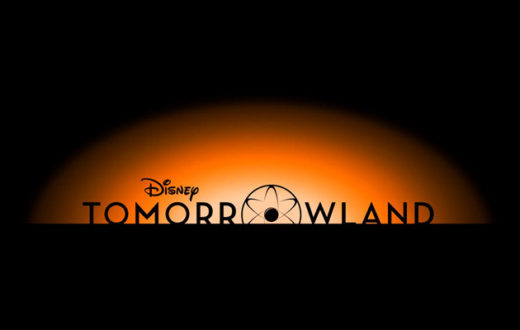
One of Walt Disney’s enduring lifetime legacies was his commitment to innovation, new ideas and imagination. An inventive visionary, Disney often previewed his inventions at the annual New York World’s Fair and contributed many technological and creative breakthroughs that we enjoy to this day. One of Disney’s biggest fascinations was with space exploration and futurism, often reflected thematically in Disney’s canon of material throughout the years. Just prior to his death in 1966, Disney undertook an ambitious plan to build a utopian “Community of Tomorrow,” complete with state-of-the-art technology. Indeed, every major Disney theme park around the world has some permutation of a themed section called “Tomorrowland,” first introduced at Disneyland in 1955, featuring inspiring Jules Verne glimpses into the future. This ambition is beautifully embodied in Disney Picttures’ latest release of the same name, a film that is at once a celebration of ideas, a call to arms for scientific achievement and good old fashioned idealistic dreaming. The critical relevance to our circumstances today and full ScriptPhD review below.
“This is a story about the future.”
With this opening salvo, we immediately jump back in time to the 1964 World’s Fair in New York City, the embodiment of confidence and scientific achievement at a time when the opportunities of the future seemed limitless. Enthusiastic young inventor Frank Walker (Thomas Robinson), an optimistic dreamer, catches the attention of brilliant scientist David Nix (Hugh Laurie) and his young sidekick Athena, a mysterious little girl with a twinkle in her eye. Through sheer curiosity, Frank follows them and transports himself into a parallel universe, a glimmering, utopian marvel of futuristic industry and technology — a civilization gleaming with possibility and inspiration.

“Walt [Disney] was a futurist. He was very interested in space travel and what cities were going to look like and how transportation was going to work,” said Tomorrowland screenwriter Damon Lindelof (Lost, Prometheus). “Walt’s thinking was that the future is not something that happens to us. It’s something we make happen.”
Unfortunately, as we cut back to present time, the hope and dreams of a better tomorrow haven’t quite worked out as planned. Through the eyes of idealistic Casey Newton (Britt Robertson), thrill seeker and aspiring astronaut, we see a frustrating world mired in wars, environmental devastation and selfish catastrophes. But Casey is smart, stubborn and passionate. She believes the world can be restored to a place of hope and inspiration, particularly through science. When she unexpectedly obtains a mysterious pin — which we first glimpsed at the World’s Fair — it gives her a portal to the very world that young Frank traveled to. Protecting Casey as she delves deeper into the mystery is Athena, who it turns out is a very special time-traveling recruiter. She distributes the pins to a collective of the smartest, most creative people, who gather in the Tomorrowland utopia to work and invent free of the impediments of our current society.

Athena connects Casey with a now-aged Frank (George Clooney), who has turned into a cynical, reclusive iconoclastic inventor (bearing striking verisimilitude to Nikola Tesla). Casey and Frank must partner to return to Tomorrowland, where something has gone terribly awry and imperils the existence of Earth. David Nix, a pragmatic bureaucrat and now self-proclaimed Governor of a more dilapidated Tomorrowland, has successfully harnessed subatomic tachyon particles to see a future in which Earth self-destructs. Unless Casey and Frank, aided by Athena and a little bit of Disney magic, intervene, Nix will ensure the self-fulfilling prophesy comes to fruition.
As the co-protagonist of Tomorrowland Casey Newton symbolizes some of the most important tenets and qualities of a successful scientist. She’s insatiably curious, in absolute awe of what she doesn’t know (at one point looking into space and cooing “What if there’s everything out there?”) and buoyant in her indestructible hope that no challenge can’t be overcome with enough hard work and out-of-the-box originality. She loves math, astronomy and space, the hard sciences that represent the critical, diverse STEM jobs of tomorrow, for which there is still a graduate shortage. That she’s a girl at a time when women (and minorities) are still woefully under-represented in mathematics, engineering and physical science careers is an added and laudable bonus. She defiantly rebels against the layoff of her NASA-engineer father and the unspeakable demolition of the Cape Canaveral platform because “there’s nothing to launch.” The NASA program concomitantly faces the tightest operational budget cuts (particularly for Earth science research) and the most exciting discovery possibilities in its history.

The juxtaposition of Nix and Walker, particularly their philosophical conflict, represents the pedantic drudgery of what much of science has become and the exciting, risky brilliance of what it should be. Nix is pedantic and rigid, unable or unwilling to let go of a traditional credo to embrace risk and, with it, reward. Walker is the young, bushy-tailed, innovative scientist that, given enough rejection and impediments, simply abandons their research and never fulfills their potential. This very phenomenon is occurring amidst an unprecedented global research funding crisis — young researchers are being shut out of global science positions, putting innovation itself at risk. Nix’s prognostication of inevitable self-destruction because we ignore all the warning signs before our eyes, resigning ourselves to a bad future because it doesn’t demand any sacrifice from our present is the weary fatalism of a man that’s given up. His assessment isn’t wrong, he’s just not representative of the kind of scientist that’s going to fix it.
“Something has been lost,” Tomorrowland director Brad Bird believes. “Pessimism has become the only acceptable way to view the future, and I disagree with that. I think there’s something self-fulfilling about it. If that’s what everybody collectively believes, then that’s what will come to be. It engenders passivity: If everybody feels like there’s no point, then they don’t do the myriad of things that could bring us a great future.”
Walt Disney once said, “If you can dream it, you can do it.” Tomorrowland‘s emotional call for dreamers from the diverse corners of the globe is the hope that can never be lost as we navigate a changing, tumultuous world, from dismal climate reports to devastating droughts that threaten food and water supply to perilous conflicts at all corners of our globe. Because ultimately, the precious commodity of innovation and a better tomorrow rests with the potential of this group. We go to the movies to dream about what is possible, to be inspired and entertained. Utilizing the lens of cinematic symbolism, this film begs us to engage our imaginations through science, technology and innovation. It is the epitome of everything Walt Disney stood for and made possible. It’s also a timely, germane message that should resonate to a world that still needs saving.
Oh, and the blink-and-you-miss-it quote posted on the entrance to the fictional Tomorrowland? “Imagination is more important than knowledge.” —Albert Einstein.
View the Tomorrowland trailer:
Tomorrowland goes into wide release on May 22, 2015.
*****************
ScriptPhD.com covers science and technology in entertainment, media and advertising. Hire our consulting company for creative content development. Follow us on Twitter and Facebook. Subscribe to our podcast on SoundCloud or iTunes.
“The wars of the 21st Century will be fought over water.” —Ismail Serageldin, World Bank

Watching the devastation and havoc caused by Hurricane Sandy and several recent water-related natural disasters, it’s hard to imagine that global water shortages represent an environmental crisis on par with climate change. But if current water usage habits do not abate, or if major technological advances to help recycle clean water are not implemented, this is precisely the scenario we are facing—a majority of 21st Century conflicts being fought over water. From the producers of socially-conscious films An Inconvenient Truth and Food, Inc., Last Call at the Oasis is a timely documentary that chronicles current challenges in worldwide water supply, outlines the variables that contribute to chronic shortages and interviews leading environmental scientists and activists about the ramifications of chemical contamination in drinking water. More than just an environmental polemic, Last Call is a stirring call to action for engineering and technology solutions to a decidedly solvable problem. A ScriptPhD.com review under the “continue reading” cut.
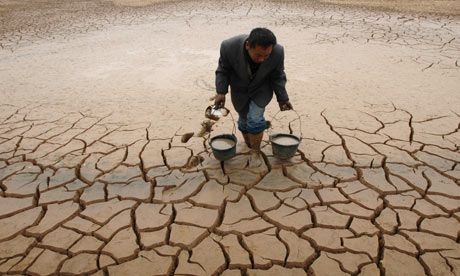
Although the Earth is composed of 70% water, only 0.7% (or 1% of the total supply) of it is fresh and potable, which presents a considerable resource challenge for a growing population expected to hit 9 billion people in 2050. In a profile series of some of the world’s most populous metropolises, Last Call vividly demonstrates that stark imagery of shortage crises is no longer confined to third world countries or women traveling miles with a precious gallon of water perched on their heads. The Aral Sea, a critical climate buffer for Russia and surrounding Central Asia neighbors, is one-half its original size and devoid of fish. The worst global droughts in a millennium have increased food prices 10% and raised a very real prospect of food riots. Urban water shortages, such as an epic 2008 shortage that forced Barcelona to import emergency water, will be far more common. The United States, by far the biggest consumer of water in the world, could also face the biggest impact. Lake Mead, the biggest supplier of water in America and a portal to the electricity-generating Hoover Dam, is only 40% full. Hoover Dam, which stops generating electricity when water levels are at 1050 feet, faces that daunting prospect in less than 4 years!
One strength of Last Call is that it is framed around a fairly uniform and well-substantiated hypothesis: water shortage is directly related to profligate, unsustainable water usage. Some usage, such as the 80% that is devoted to agriculture and food production, will merit evaluation for future conservation methods. California and Australia, two agricultural behemoths half a world apart, both face similar threats to their industries. But others, such as watering lawns. are unnecessary habits that can be reduced or eliminated. Toilets, most of which still flush 6 gallons in a single use, are the single biggest user of water in our homes—6 billion gallons per day! The US is also the largest consumer of bottled water in the world, with $11 billion in sales, even though bottled water, unlike municipal tap water, is under the jurisdiction of the FDA, not the EPA. As chronicled in the documentary Tapped, 45% of all bottled water starts off as tapped water, and has been subject to over 100 recalls for contamination.
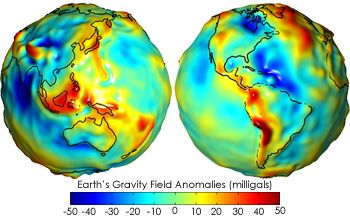
A cohort of science and environmental experts bolsters Last Call’s message with the latest scientific research in the area. NASA scientists at the Jet Propulsion Laboratory are using a program called the Gravity Recovery and Climate Experiment (GRACE) Satellite to measure the change in oceans, including water depletion, rise in sea levels and circulation through a series of gravity maps. Erin Brockovich, famously portrayed by Julia Roberts in the eponymous film, appears throughout the documentary to discuss still-ongoing issues with water contamination, corporate pollution and lack of EPA regulation. UC Berkeley marine biologist Tyrone Hayes expounds on what we can learn from genetic irregularities in amphibians found in contaminated habitats.
Take a look at a trailer for Last Call at the Oasis:
Indeed, chemical contamination is the only issue that supersedes overuse as a threat to our water supply. Drugs, antibiotics and other chemicals, which cannot be treated at sewage treatment plants, are increasingly finding their way into the water supply, many of them at the hands of large corporations. Between 2004 and 2009, there were one half a million violations of the Clean Water Act. Last Call doesn’t spare the eye-opening details that will make you think twice when you take a sip of water. Atrazine, for example, is the best-selling pesticide in the world, and the most-used on the US corn supply. Unfortunately, it has also been associated with breast cancer and altered testosterone levels in sea life, and is being investigated for safety by the EPA, with a decision expected in 2013. More disturbing is the contamination from concentrated animal feeding operations (CAFOs) near major rivers and lakes. Tons of manure from cows, one of which contributes the waste of 23 humans, is dumped into artificial lagoons that then seep into interconnected groundwater supplies.

It’s not all doom and gloom with this documentary, however. Unlike other polemics in its genre, Last Call doesn’t simply outline the crisis, it also offers implementable solutions and a challenge for an entire generation of engineers and scientists. At the top of the list is a greater scrutiny of polluters and the pollutants they release into the water supply without impunity. But solutions such as recycling sewage water, which has made Singapore a global model for water technology and reuse, are at our fingertips, if developed and marketed properly. The city of Los Angeles has already announced plans to recycle 4.9 billion gallons of waste water by 2019. Last Call is an effective final call to save a fast-dwindling resource through science, innovation and conservation.
Last Call at the Oasis went out on DVD November 6th.
~*ScriptPhD*~
*****************
ScriptPhD.com covers science and technology in entertainment, media and advertising. Hire our consulting company for creative content development.
Subscribe to free email notifications of new posts on our home page.
]]>
In April of 2010, the California Science Center added a 45,000 square foot permanent exhibit called ‘Ecosystems,’ nearly doubling the size of the museum. Ten years in the making, at a cost of $165 million, ‘Ecosystems’ manages to impress visually and scholastically. ScriptPhD.com recently got a private tour and in-depth guide of the ambitious exhibit and didactic tool. Afterwards, we had the opportunity to sit down with the man that conceptualized ‘Ecosystems’ and curator of ecology at the California Science Center — Dr. Chuck Kopczak. An avid geologist, and devoted to the promulgation of quality science education, Dr. Chuck graciously sat down with us for an in-depth conversation about ‘Ecosystems,’ the future of science education, and energizing environmental causes through science. Our full tour and podcast, under the “continue reading” cut.
How can we protect and nurture our Earth’s diverse environment if we don’t even know about it? The Earth’s biodiversity is spectacular, with a singular globe housing millions of unique species that have to share space across extreme environments, weather zones and poles. Scientists concur that a better understanding of this diversity, and humanity’s impact on it through our modern life (we add 7 million people to the globe each month!), is an essential component of environmental education and effective activism in fighting pollution and effecting sustainability for future generations. In the heart of Los Angeles, at its most-visited museum, The California Science Center, lies a new exhibit that takes curious visitors through the various ‘zones’ of the Earth’s habitats, with each room providing a colorful, interactive, informative peek at what survival entails. At the very end of the ‘Ecosystems’ exhibit, after we have come to appreciate our Earth’s uniqueness, beauty, and scientific breadth, is a well-timed section on waste, resources, and the power of recycling. Come take a short pictorial tour of ‘Ecosystems’ with us, and then take a listen to our podcast with the passionate scientist, Dr. Chuck Kopczak, that made it all possible.
‘Ecosystems’ is divided into rooms called ‘Zones,’ some of which we’ve documenting here, consisting of a gallery that engenders appreciation for the interconnectedness of a different part of our living world. Portrayed are different environments, species, survival demands, and physical factors. All of the rooms include interactive, hands-on experiments especially tailored for kids.
The ‘Island Zone’ includes hands-on experiments that allow visitors to see the challenge animals face in getting to an island from water, and how their physical characteristics evolve as a result of these environmental demands. The exhibit mimics the discoveries that Darwin might have encountered on the Galapagos Islands.

The ‘Extreme Zone’ includes radically different environments representing ecosystems — Rocky Shore, Poles, Deep Sea Vents, and the Desert, both pictured below. Environmental factors such as cold, droughts, and ice deeply test the limits of animals as they try to survive.
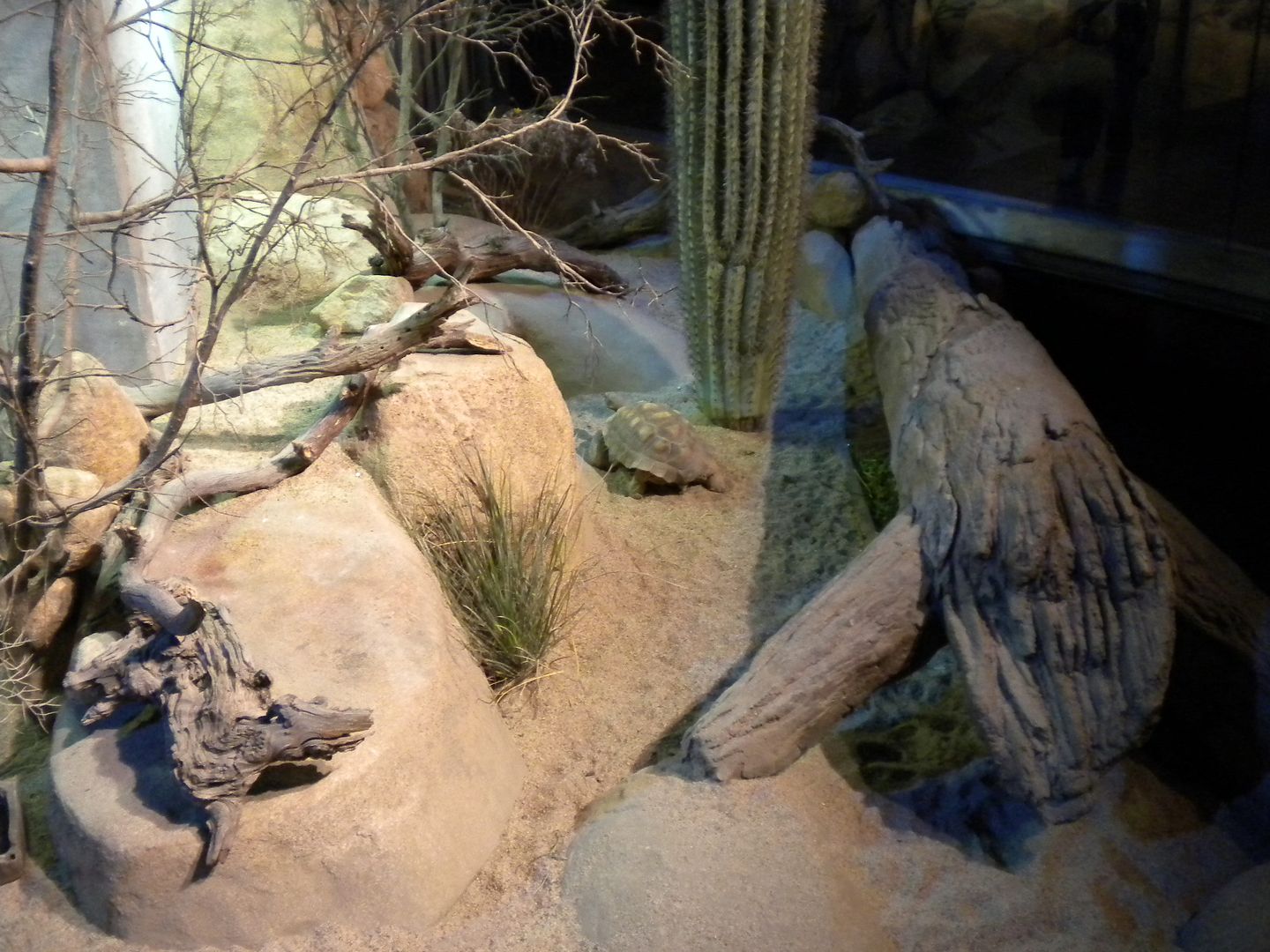
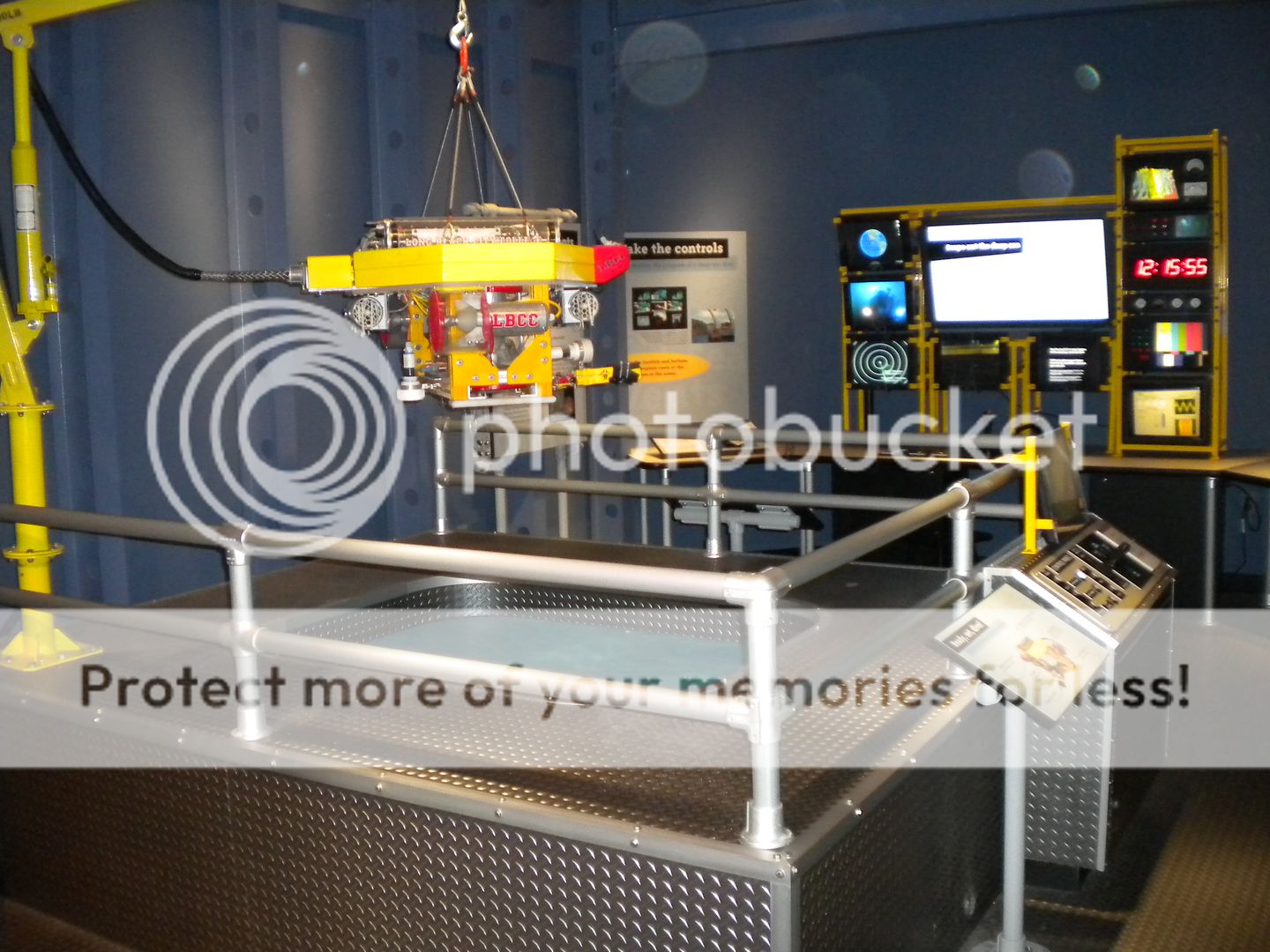
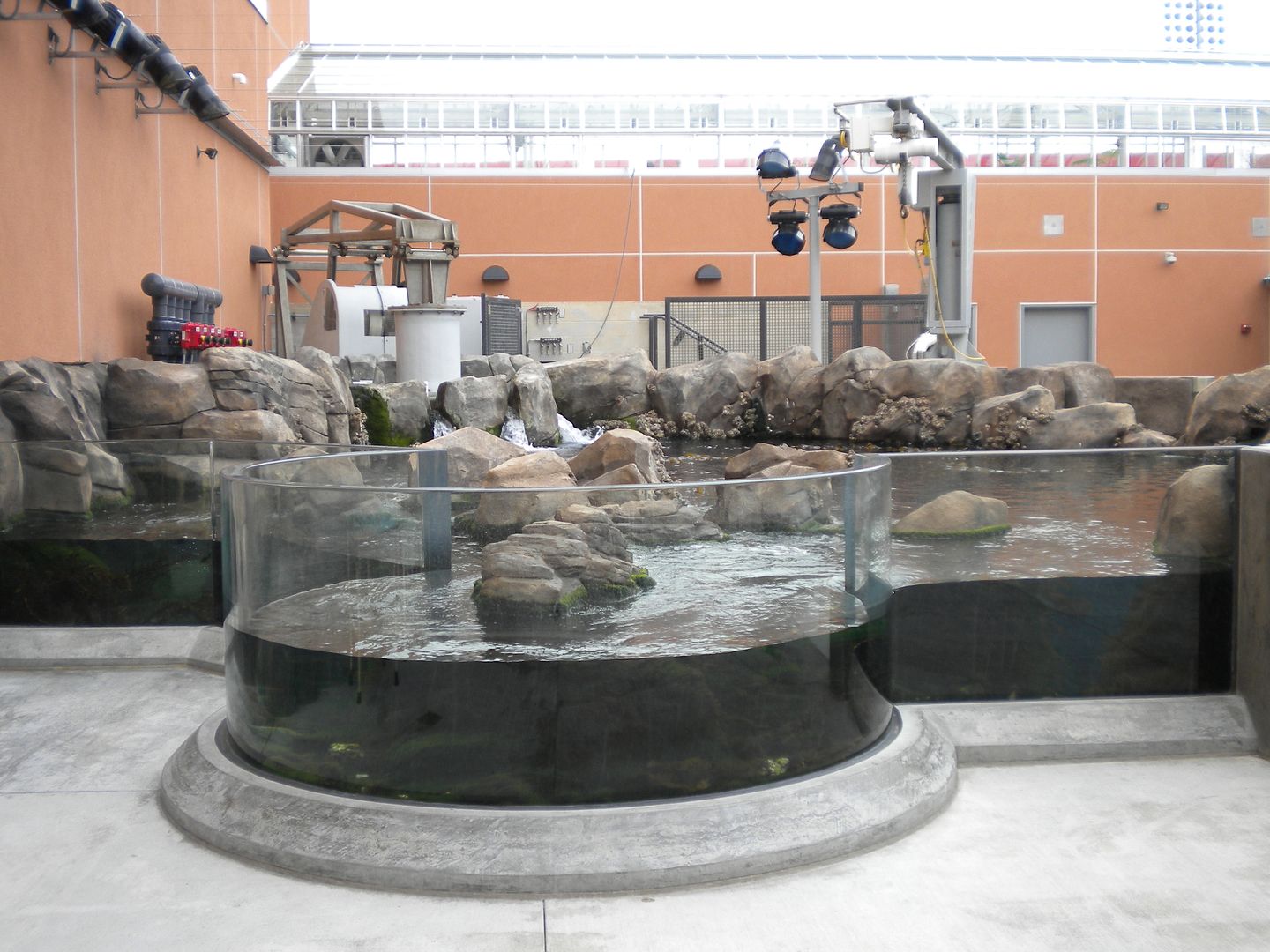
The Global Zone allows visitors to travel around the world with an amazing, first-of-its-kind piece of technology: an internal projection high definition Magic Planet® exhibit, projecting images onto a global map from within the sphere to answer questions about matter and energy across the globe.
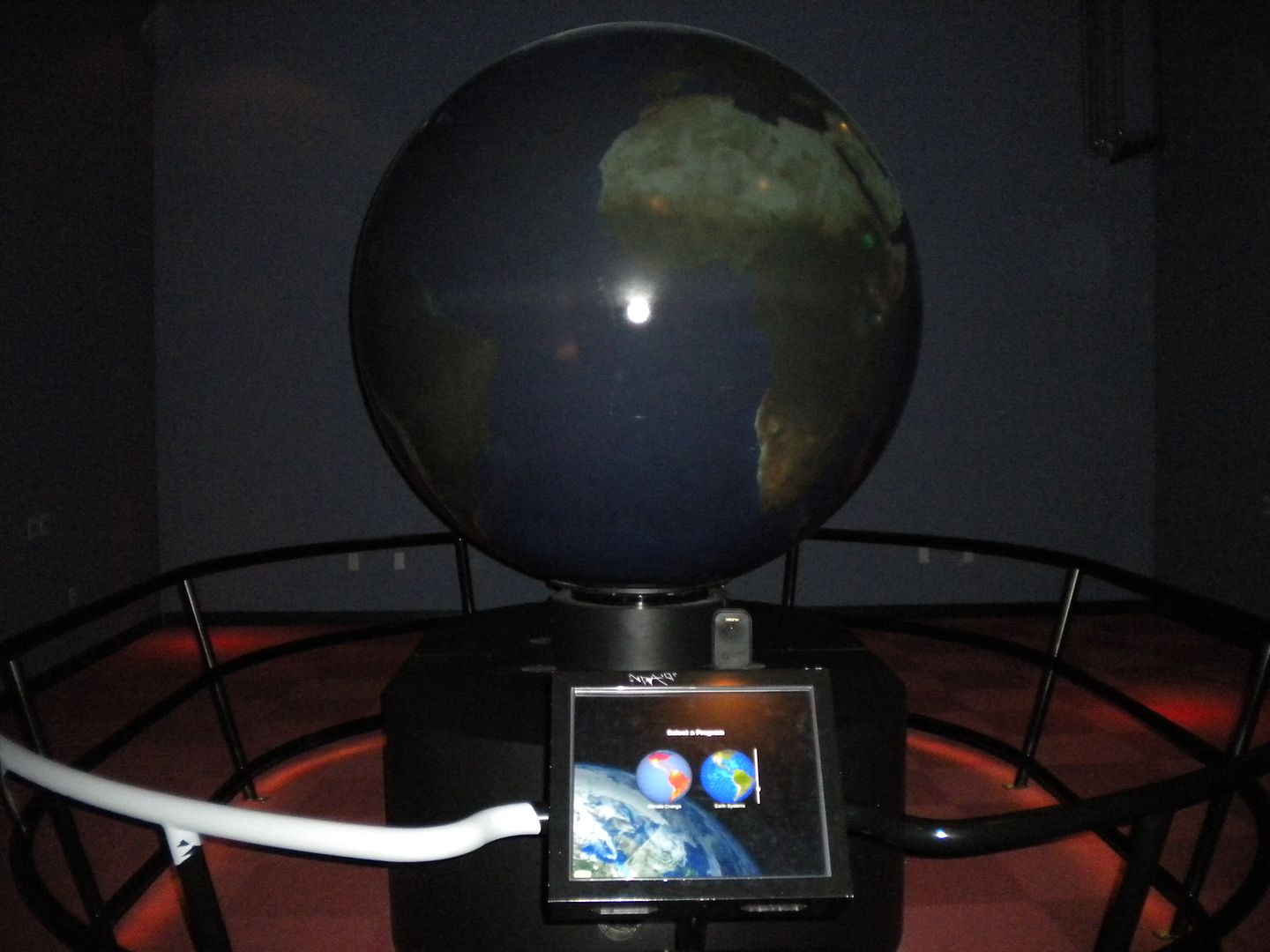
One of the fan favorites of ‘Ecosystems’ is the ever-so-gross Rot Room, where folks can learn about how much the continuity of life depends upon, well… rot. Interactive decomposition exhibits (such as the one pictured below) and time-lapse videos show the recycling of nutrients and energy back into the environment.
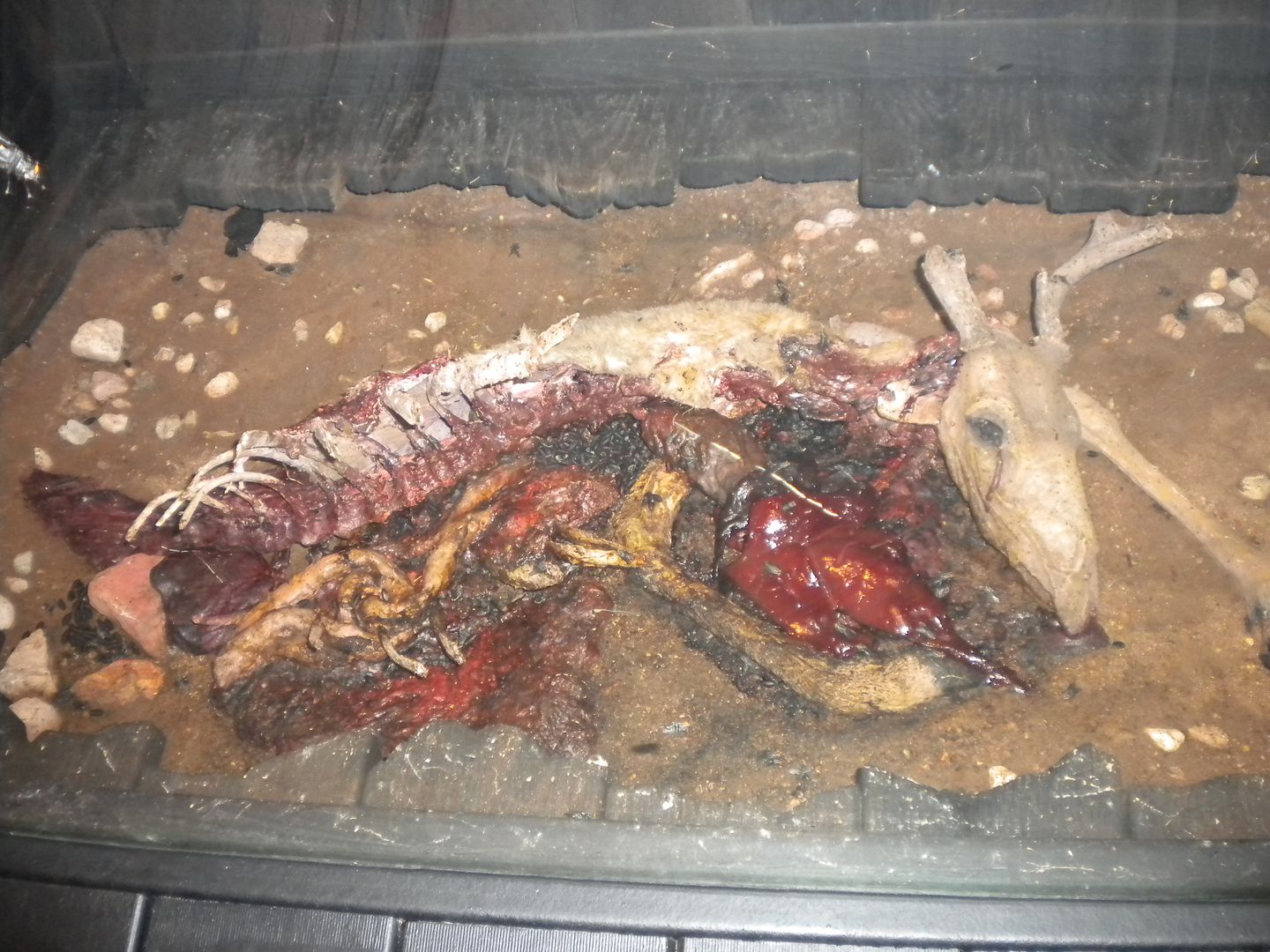
The pièce de resistance of the California Science center’s ‘Ecosystems’ exhibit, and its biggest part by far, is the “Rain Forests of the Sea” exhibit, a 188,000 gallon kelp habitat — the largest man-made of any museum in the world — that illustrates the diversity of our sea forests and the environmental factors that kelp forests depend on: a rocky substrate, sunlight, moving water, and high nutrient levels.


In the midst of the ‘Ecosystems’ exhibit is an interactive lab, where new additions to the over 250 species on exhibit at ‘Ecosystems’ are researched and cared for. In addition, it provides an opportunity for young high school students interested in pursuing science to answer guests’ questions, pursue research, and learn the scientific method in the process.

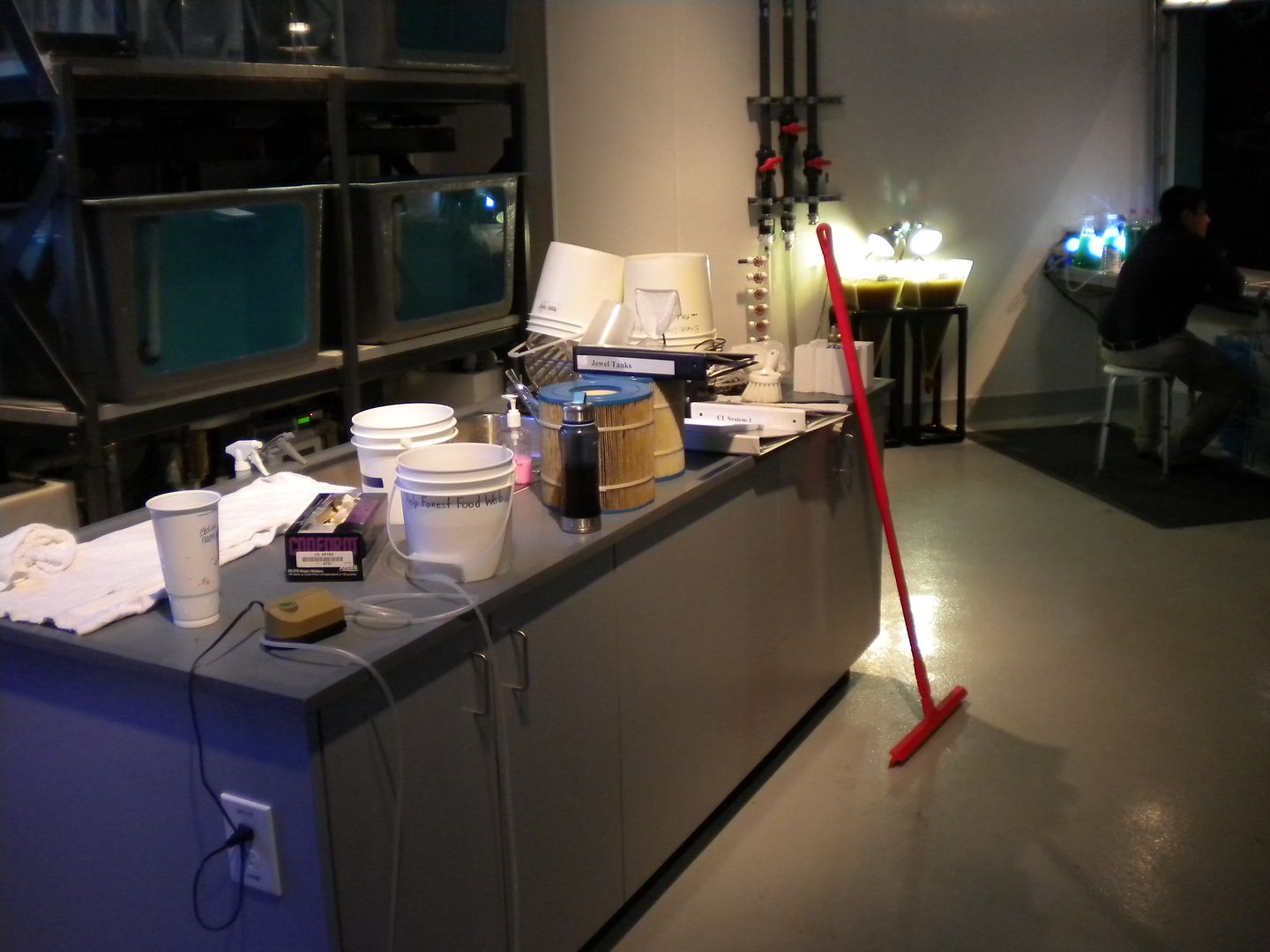
The end of the ‘Ecosystems’ exhibit takes visitors to the modern ‘L.A. Zone,’ where they can learn about weather patterns, wind currents, and geologic make-up of the Los Angeles Basin. Most importantly, visual waste exhibits expose the unique challenges in the issues of energy, water, and impact on wildlife.
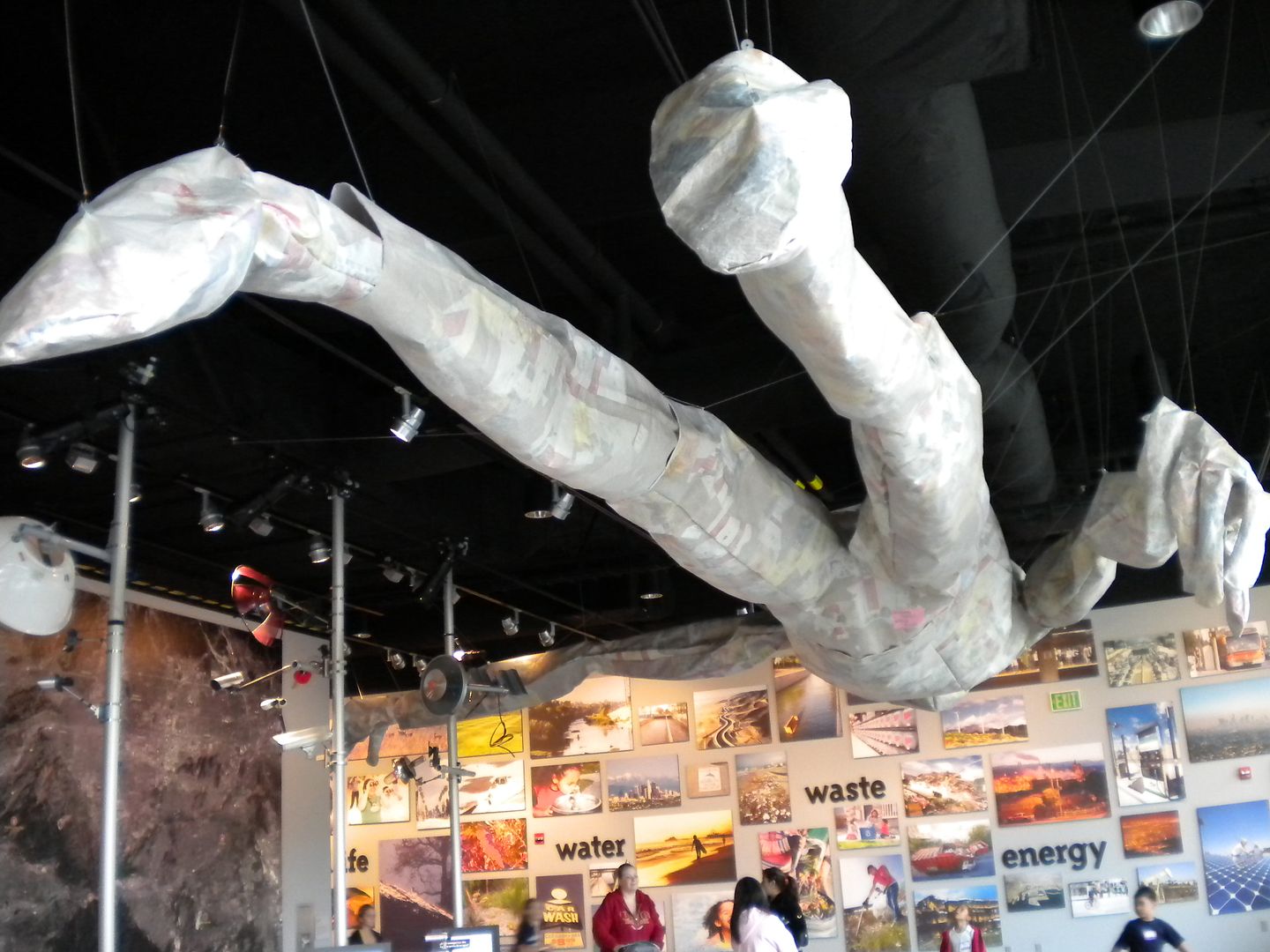

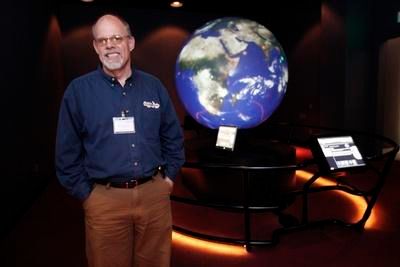
The mastermind behind such wonders as the kelp zone (his nickname is indeed Dr. Kelp!), the Global Zone, and the Los Angeles Zone, among its other structural feats, Dr. Chuck Kopczak is as intellectually accomplished as he is full of wonder about science, our Earth, the environment and the best ways to teach children about them through technology and modern exhibits. Recently, he went on a collecting expedition in Guantanamo Bay, Cuba to study species and the environment. He generously sat down with ScriptPhD.com to talk about Ecosystems, particularly:
•The how, who and why of designing the Ecosystems exhibit
•Why teaching science and inspiring future scientists requires an interactive experience
•How emotional connection resonates with environmental awareness
•Why the California Science Center is setting up labs and charter schools within their exhibit spaces to encourage young scientists
Take a listen to our podcast:
ScriptPhD.com would like to thank the California Science Center, Dr. Chuck Kopczak, and Kristina Kurasz for their help and generosity of time. We encourage anyone planning a visit to Los Angeles, and interested in science and the environment, to check out this free exhibit and learning center.
~*ScriptPhD*~
*****************
ScriptPhD.com covers science and technology in entertainment, media and advertising. Hire our consulting company for creative content development.
Subscribe to free email notifications of new posts on our home page.
]]>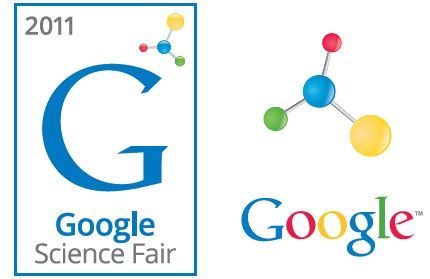
In his State of the Union speech in January, US President Barack Obama proclaimed that “we need to teach our kids that it’s not just the winner of the Super Bowl who deserves to be celebrated, but the winner of the science fair.” A noble (and correct) assessment, to be sure, but one mired in numerous educational and cultural obstacles. For one thing, science fairs themselves are at a perilous crossroads. A New York Times report issued in February stated that not only is participation in science fairs among high school kids falling, but that the kind of creativity and independent exploration that these competitions necessitate is impossible under current rigid test-driven educational guidelines for teaching mathematics and science. Indeed, an interesting recent Newsweek article on “The Creativity Crisis” conveyed research studies showing that for the first time, American creativity is declining. How appropriate, then, that this April (national math education month) brings the culmination of the Google World Science Fair, the first ever competition of its kind transpiring online and open to lab rats from all over the globe. ScriptPhD.com discusses why this could be a game-changer for the next generation of young scientists, under the “continue reading” cut.
One of the most chilling chapters in Thomas Friedman’s brilliant 2005 book “The World is Flat” discusses the ramifications of the globalization of science, and how quickly America is getting left behind. In addition to global “flatteners” (connectors) such as the internet, outsourcing, and yes, even access to free information via Google, Friedman details how hard third-world nations such as India and China work to attain supreme educations in math and science. On the one hand, they are producing more raw talent than ever, which often (due to lack of job opportunities and world-class facilities) finds its way into American (and Western) laboratories and corporations. On the other hand, it leaves American students and scientists ill-prepared to compete in a globalized economy based on information rather than raw production. (See Tom’s talk about global flattening at MIT here.) China will surpass the United States in patent filings by scientists by 2020. They are set to overtake the US in published research output even faster – in 2 years! Disturbingly, US teens ranked 25th out of 34 countries in math and science in the most recent world rankings, prompting President Obama to direct $250 million dollars towards math and science education. How that education is conveyed in classrooms is a subject of quite ardent debate.
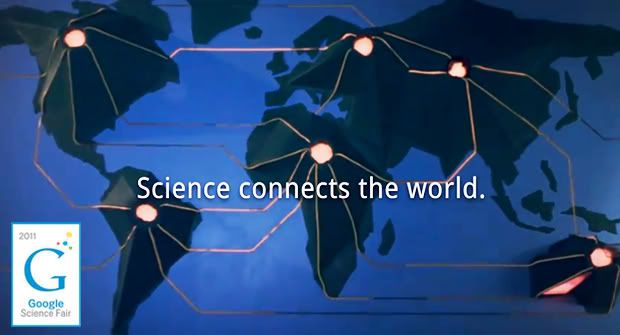
Clearly, science education, in its current incarnation, is not working successfully. Unorthodox curricula have been proposed by numerous academic institutions, and even implemented with success in some countries. Furthermore, the idea of iconoclasts and self-taught geniuses, left alone to ferment their creativity, is not new. Albert Einstein famously clashed with authorities in primary school (which he barely finished), noting that “the spirit of creativity and learning were lost in strict rote learning.” In 2009, self-taught college dropout Erik Anderson proposed a major new theory on the structure of spiral galaxies and published it in one of the world’s most prestigious journals. (See ScriptPhD.com’s excellent post on whether creativity can really be measured in the lab.) Enter the Google World Science Fair. Capitalizing on the web and social media-driven knowledge of the current generation, they aim to not only expand on traditional well-known science competitions like Intel and Siemens, but to catapult them into the modern Internet era. Concomitantly, and even more importantly, as the fair’s organizers relayed over the weekend to the New York Times, they wish to improve science and math education in America incorporating a brand that many kids are already familiar with and use with ease. Why not infuse the excitement of a Google search into the staid, antiquated methodologies afflicting much of math and science curricula today? The impacts of science and independent experimentation are wide-reaching and powerful. During a gathering of scientists, students and judges on the day of the science fair announcement at Google headquarters, African self-taught scientist William Kamkwamba shared how from a library book, he was able to build a wind mill that powered his large family’s house, brought water to his impoverished village, but then taught other villagers to build wind mills, and by proxy, improved schools and living conditions. Who knows how many of this year’s global entrants will make such sizable contributions to their communities, or even, as they’re encouraged to do, solve global-scale afflictions?
Beyond the originality factor, he Google competition is important in several ways. It’s virtual and literally open to anyone in the world so long as they are a student between the ages of 13-18, thereby negating the most obvious roadblock to participation in many science competitions: location and affordability. (Though studies argue that internet access is still an overwhelming factor in economic and social equality, which is a not insignificant hurdle for aspiring third world participants.) Secondly, the competition is being judged on a passion for science and ideas, especially those relevant to the world today. In an age when we’re trying to ameliorate diseases, epidemics, the effects of global warming and violently changing weather patterns, urban sprawl and overpopulation, along with an ever-frustrating lack of access to water, food and sanitation by the poor, a few extra ideas and approaches can’t hurt. After all, a 15-year-old Louis Braille invented a system of reading for the blind, 18-year-old Alexander Graham Bell sketched rough ideas for what would turn into the telephone, 14-year-old Philo T. Farnsworth invented the television, and the modern microscope that many entrants will likely use in their experiments was invented by a 16-year-old Anton van Leeuwenhoek! (See more here.)
In the same spirit of hip novelty and digital cleverness that they’ve infused into the age-old science fair, Google hired the team from Los Angeles-based Synn Labs, the same team behind the viral OK Go music video, to create a thirty-second Rube Goldberg-themed video promoting the science fair. It is, perhaps, the highlight of the competition itself! Take a look:
The submission deadline for the 2011 online global science fair is today, April 4, 2011. All information about submission, judging, prizes, and blogs about entries can be found on the Google Global Science Fair homepage. The site also offers resources for teachers and educators looking to gain ways to bring the essence of Google’s science fair into their classrooms. You can also track all projects, as well as interact and exchange ideas with other science buffs, on their Facebook fan page and Twitter page.
ScriptPhD.com encourages all of our readers, clients, and fans who either submitted entries by the deadline, had their kids enter, or know someone who entered the competition to come back and tell us about the experience on our Facebook page. We’d love to hear about it! We wholeheartedly support programs that promote science and innovation, especially applicable to mitigating global social and technological obstacles. Our consulting company mantra is that great creative enterprises are fueled by great ideas. So, too, are science and technology. As such, we applaud Google for reinventing (and virtualizing) science outreach to encourage ideas and transform an entire generation of scientists, regardless of location, education or perceived ability. And if you’re bummed that you missed out on this year’s competition, think of it this way: you have plenty of time to prepare for 2012!
This post was sponsored by Unruly Media.
~*ScriptPhD*~
*****************
ScriptPhD.com covers science and technology in entertainment, media and advertising. Hire our consulting company for creative content development.
Subscribe to free email notifications of new posts on our home page.
]]>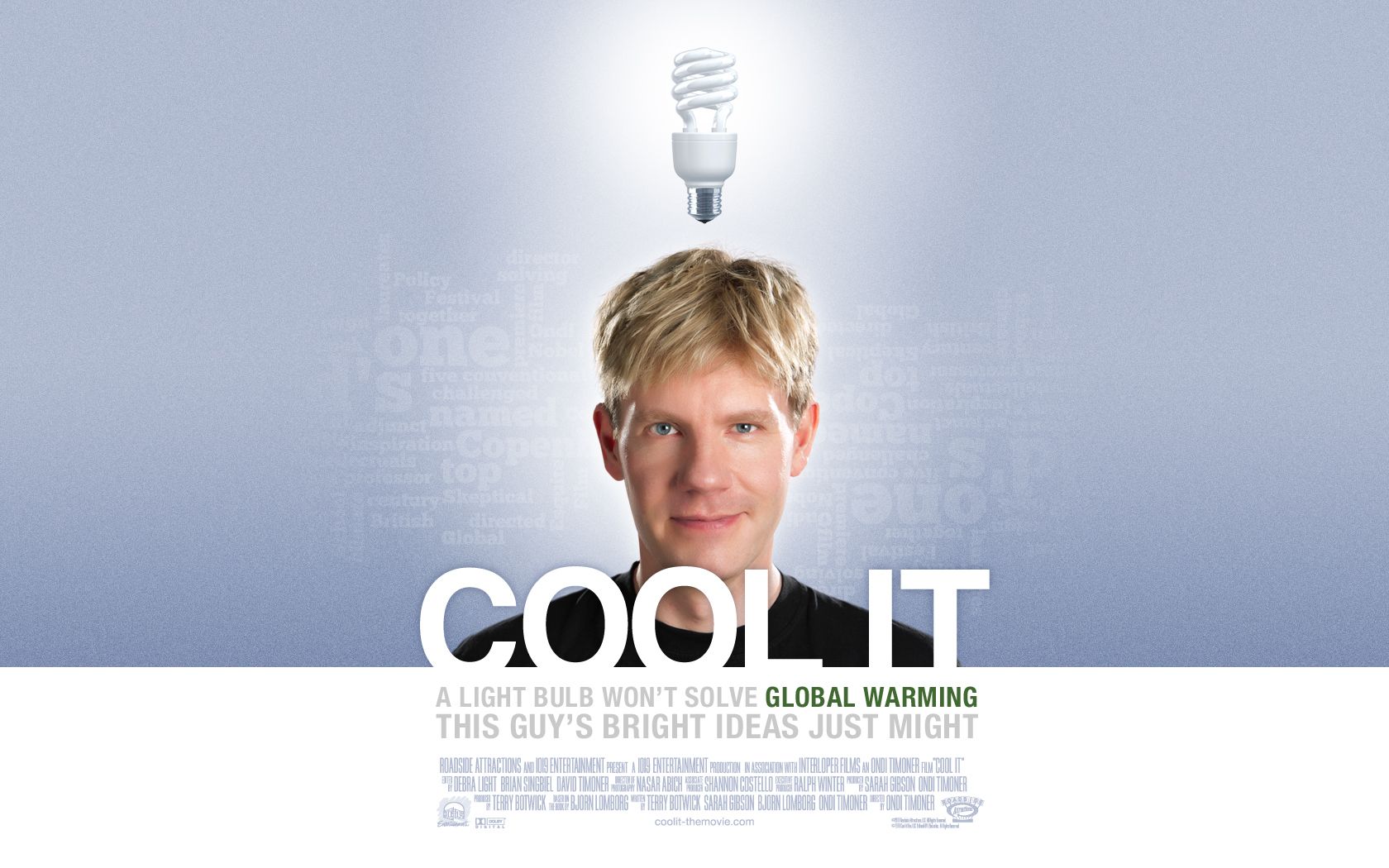
Fewer topics in contemporary science and technology policy have generated as much controversy or vociferous debate as global warming (more recently branded as climate change) and more importantly, how to mitigate its effects. Recent international treaties such as The Kyoto Protocol and conferences such as last December’s United Nations Climate Change Conference in Copenhagen have largely paid lip service towards actionable change and technology aimed at eradicating the precursors and causes of global warming. In the middle of this stalemate is an increasingly hostile rhetoric that has bifurcated into two divergent, unyielding camps—either you believe climate change and greenhouse emissions are a fraud, period, or you believe the problem is so imminently dire that surely, the end of the world is nigh. This dichotomy was no more apparent than during last year’s ”Climategate” controversy, in which hacked emails leaked from the University of East Anglia’s Climatic Research Unit in England were interpreted, depending on which report you read, as scientific fraud and tampering or reinforcement for climate science. Perhaps it is time, as the eponymous title of our latest Editor’s Choice suggests, for us all to Cool It. An environmental film about 21st Century problems, and the modern solutions they necessitate, Cool It presents an unapologetic, practical approach towards global warming and the problems that eclipse it. It’s time we all listened. ScriptPhD.com continues our ongoing “It’s Not Easy Being Green” series with a review of this thought-provoking, conversation-starting film. After seeing a recent screening in Los Angeles, we are proud to give Cool It our blog’s rare highest honor—Editor’s Choice. Join the conversation now under the “continue reading” cut.
A (Very) Brief History of Climate Change in Media and Entertainment
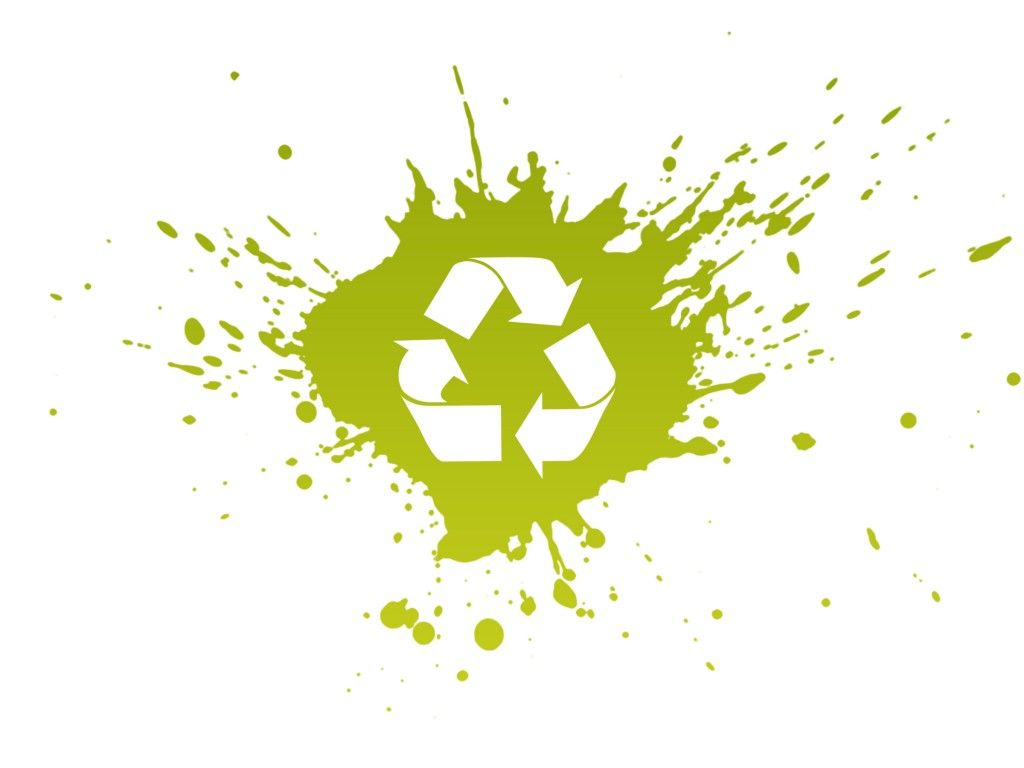
In 1896, Swedish chemist Svante Arrhenius made the first observation that fossil fuel combustion had a correlation to global warming. Discovery Channel has a terrific interactive on the history of scientific discovery in climate change here. It wasn’t until 1962, when a serialized novel called Silent Spring by Rachel Carson was published in The New Yorker magazine, that the issue took forefront in the public media. Considered one of the most influential works in the area of climate change, Silent Spring gives a meticulous account of how the pesticide DDT enters the food chain and accumulates in the fatty tissues of animals, including human beings, and causes cancer and genetic damage. Because of her book, President John F. Kennedy ordered his Science Advisory Committee to look into the book’s claims (use of DDT has since been banned, much to the consternation of bedbug sufferers everywhere!). President Nixon went on to pass the Clean Air Act and create the Environmental Protection Agency, which now has the power to regulate harmful greenhouse gas emissions. Another major milestone for climate change in modern media was the 2006 release of Al Gore’s Oscar-winning film An Inconvenient Truth, which has been given credit not only for re-energizing the environmental movement, but for raising the profile of global warming. (Cool It has been referred to as an “anti-Inconvenient Truth,” but we’ll get to that in a moment.) Marketing and advertising are never far behind the cultural zeitgeist, as green branding has been one of the most successfully growing sectors in the industry. An article in Advertising Age in April of 2010 listed the 10 Green Marketing Milestones of our time.
Who is Bjørn Lomborg and Why is He So Controversial?
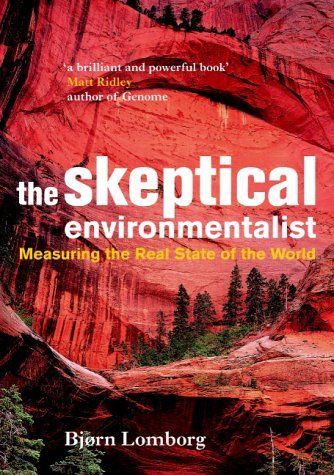
In 2001, a then-unknown adjunct professor at the Copenhagen Business school named Bjørn Lomborg published a book called The Skeptical Environmentalist, which claimed that not only were some of the more dire claims of pending environmental catastrophe exaggerated, but that they were flat-out wrong. Though a carefully-researched volume, the central thesis of Environmentalist was anathema to the academic climate community, and caused an immediate hailstorm on both sides of the climate change spectrum. Accusations of scientific dishonesty, one of the most austere charges within academia, were brought forth by several environmental scientists to the Danish Committees on Scientific Dishonesty. Their finding was mixed, ruling that The Skeptical Environmentalist was scientifically dishonest, but absolving Lomborg himself due to his “lack of expertise” in the field. The decision was later annulled by the Ministry of Science, Technology and Innovation, citing a lack of proof and specific standards. Lomborg has remained a polarizing, contentious figure ever since.

Lomborg, since named one of the 100 most influential people by Time magazine, is now the director of the Copenhagen Consensus Center, where he brings together some of the world’s top economists, including five Nobel laureates, to brainstorm how to solve the world’s most pressing problems. He followed up his first book with another eco-centered piece, Cool It, that offers an alternative platform for the trillions of dollars of current funding aimed at counteracting (often ineffectively) the effects and sources of global warming. In no way denying the very real phenomenon of climate change, Cool It is instead a polemic on contemporary global problems that merit our action and attention right now and that, if solved, will simultaneously obviate climate effects as a bonus. With the help of Director Ondi Timoner, Lomborg has translated Cool It into an extremely interesting, thought-provoking and entertaining documentary. ScriptPhD.com got a sneak peek in Hollywood a couple of weeks ago.
REVIEW: Cool It
ScriptPhD GRADE: A
“Fear has been ruling the climate debate,” declares Lomborg in the opening minutes of Cool It, proclaiming what is a sort of mantra for this film. Fear sells. Fear opens eyes. Fear declares attention. (Read our piece on The Science of Fear.) But fear drowns out messages in hyperbole and bombast. Far from decrying the looming reality of climate change and global warming, Lomborg is simply suggesting that it isn’t the impending catastrophe that media and scientists have ingrained us to believe. Fueling these misconceptions, Lomborg believes, are popular culture messages and movies that simply exaggerate claims, and do nothing to add to a productive conversation about global warming. Take a look, for example, at the opening film shown at the United Nations Climate Change Conference 2009 (COP15) in Copenhagen from the Ministry of Foreign Affairs of Denmark and decide for yourselves if its hyperbolic, fear-fueled message is more about solutions or rhetoric:
This, a commercial for planestupid.com that attempts to correlate airplane emissions to extinction of polar bears:
Turns out that the Kyoto Protocol, if enacted to its full potential, would only save one polar bear per year lost to the effects of global warming. This does nothing to ameliorate a far bigger problem—we shoot 300-500 polar bears to death every year!
“When is something fashionable and when is it rational?” Lomborg asks us. In 2010, hundreds of millions of people participated in Earth Hour, a collective global undertaking to turn off our lights for an hour. Many of the participants undoubtedly lit candles instead, which unfortunately emit twice the CO2 emissions of a light bulb! The 20 trillion in proposed global funding, even if appropriated, will only result in a 0.1 ºF temperature effect by the end of the century. Cap and trade, the Kyoto Protocol and even this past year’s Copenhagen conference, Lomborg asserts, are a waste of time and money that perpetuate decades-old failed promises. Furthermore, the only way for poor countries to climb out of penury and into first-world status is by burning coal and consuming energy. It’s simply unrealistic to think otherwise. The problems that keep Lomborg up at night—AIDS, malaria, disease, lack of access to clean drinking water—are far more important to third world countries than global warming. Nothing illustrates the schism in priorities better than the juxtaposition of two classroom scenes, one in rural Africa and one in urban England. In each case, Lomborg asks the students what their priorities are, what they wish for and what frightens them. To a one, the African students wish for basic luxuries that we take for granted, such as a house and a car, with most rating their top priority as health care. The British students, warm, safe, comfortable, and fed, worried mostly about global warming and our planet’s demise, drawing pictures and describing scenarios that would make Edgar Allan Poe cower in a fetal position.
The second-half of Cool It, far from harboring anti-climate change beliefs, largely focuses on the science and technology advances that must occur to a) counteract global warming, b) make energy, and especially alternative energy, cheaper and c) solve some practical problems in the meantime. Solar panels, for example, are still ten times more expensive than fossil fuels, while unsightly and space-hungry wind turbines face a “not in my backyard” backlash from communities. Revolutionary advances such as energy garnered from water-splitting (read ScriptPhD.com’s recent article on this very phenomenon at The National Ignition Facility), and artificial photosynthesis present amazing potential to create unlimited sources of cheap energy. Lomborg interviews former Microsoft CTO, scientist Nathan Myrvold, whose idea machine includes inventions such as a nuclear energy reactor fueled by waste at a cost competitive to coal. Clearly in awe of scientists, Lomborg touches on adaptation—the notion that global warming, and certain inconveniences thereof, will impact humanity, but that we can counteract these effects through smart technology. The Dutch, 60% of whom live below the sea level, experienced a far more devastating flooding than Hurricane Katrina in 1953, and have since erected the world’s best levees. Urban cooling, such as painting all rooftops white, would impact temperatures in global warming hotspots such as Los Angeles as much as 5 ºC at a one-time cost of $1 billion. He also touches on possibilities within the highly-contested field of geo-engineering, to date largely considered a sci-fi concept, wherein global warming is literally reversed with science. Cloud brightening to reflect more solar light into space and cool the planet, volcano mimics in the stratosphere for the same purpose, experiments to literally suck the CO2 out of the air, regenerative grazing for raising farm animals—all hold immense promise for future generations.
To be sure, Cool It has an agenda, inasmuch as An Inconvenient Truth, or any other subjective work espousing a decided point of view. At ScriptPhD.com, it is not our position to wholly agree or disagree with either position, but rather to applaud the ideas they represent, and to continue a dialogue that will eventually lead to solutions. “No matter what I found over the next year,” said filmmaker Ondi Timoner of undertaking this endeavor with Lomborg, “It was worth taking on this project to see if perhaps I could create a film that would help push through the polarizing logjam that had become the never-ending (and extremely expensive) climate debate towards real and practical solutions.” It’s time to face the facts that changing one light bulb or driving one Prius, no matter how well-meant, simply isn’t going to change the world alone. It’s time to also admit that the contentious, argumentative, ineffective stale-mate that has become the climate debate is serving no one, least of all the worst-off populations needing clean water, health care and technology. Over-exaggerated, frightening tales might sell movies and commercials, but they don’t get bills passed, and they don’t apportion funds for smart, permanent solutions and scientific advancement. Love him or hate him, but Lomborg is 100% on-point in that regard. Whatever side of the climate change debate you fall on, we guarantee that seeing this film will make you rethink certain positions and priorities, while reinforcing the immutable, inescapable fact that we simply must invest in alternative energy technologies and the scientists that are revolutionizing them. Concluded Timoner: “We all breathe the same air, and we all need to unite to focus on the right priorities at this crucial tipping point.”
Let’s start a real conversation today. We welcome any and all comments and reactions as you see the film, or on this topic in general.
Cool It goes into selected release in major cities on November 12, 2010. View a list of cities and release dates here.
Cool It trailer:
~*ScriptPhD*~
*****************
ScriptPhD.com covers science and technology in entertainment, media and advertising. Hire our consulting company for creative content development.
Subscribe to free email notifications of new posts on our home page.
]]>
Nothing has done more to reinvigorate discussions about energy and fuel dependence than the tragic oil spill currently afflicting the Gulf Coast [excellent resource for trajectory, timeline and news sources]. Though scientists and oil manufacturers continue to debate the validity of the “Peak Oil” theory, a very uncomfortable reality looms that oil production may not be able to keep up with thirsty demand. With an ever-increasing global population, a constant proliferation of technology choices and lifestyle improvements, and a rising middle class in third world countries, the factors contributing to fuel consumption may be the precipice of an eventual geopolitical crisis. In an effort to showcase their dedication to addressing the most salient energy and environmental questions affecting our generation, the Discovery Channel, backed by founder John Hendricks, is launching a revolutionary four-part documentary called Powering The Future. In it, they address a range of economics, national security, social and scientific questions related to energy and fuel all through the single focal point of searching for a modern, clean, limitless supply of energy. Our coverage of Powering the Future includes a review of the first installment and an exclusive podcast interview with the show’s host, lead scientist for the Nature Conservancy, Dr. M. Sanjayan. For full content, please click “continue reading.”
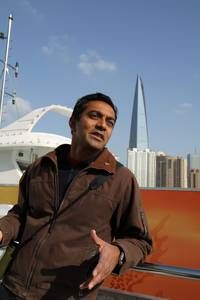
“We are the energy generation, but we as Americans do not fundamentally understand what energy is, where it comes from, how we use it, and how much we need,” remarks Dr. M. Sanjayan, host of the new Discovery Channel four-part documentary Powering The Future. Indeed, any honest retrospective of the modern energy crisis first requires a primer reviewing how our dependence on major fuel sources (coal, oil, and natural gas) came about and the unique challenges that breaking it poses. I consider myself a fairly well-informed individual, particularly on scientific matters, but in watching the first installment, The Energy Revolution, even I was amazed at the sheer interconnectedness of major electrical grids, and how much links us globally in energy delivery vessels. A German electrical engineer in the documentary compares running a major grid to being an air traffic controller.
Much of the current hope for alternative energy sources rests in grandiose ‘silver bullet’ solutions. Scientists at the National Ignition Facility are using the world’s biggest and highest powered lasers as a power source for smashing together the hydrogen atoms in a droplet of water, resulting in nuclear fusion. This mimics the way that the sun makes energy, and, if successful, would harness a limitless supply of power. Nuclear fusion research has been ongoing since the 1940s, but has never been applied successfully on a large enough scale like the undergoing experiments at the Ignition Facility. [ScriptPhD.com was recently granted an exclusive tour of the Ignition Facility, which will be covered soon in a separate post.] Another growing ‘silver bullet’ sector has been the harnessing of two natural energy sources—the sun and wind. Wind energy is the largest (and fastest-growing) alternative source of energy. Denmark gets about 20% of its power from wind sources, while the United States gets approximately 1.2%. Photovoltaic, or solar panels, more mobile and aesthetically pleasing than wind turbines, are another popular source of alternative energy. Little money has been poured into researching photovoltaic grids as a large-scale source of energy, it holds promise. The 89 petawatts of sun that shines on the Earth each year is more than 6,000 times the 15 terawatts of electrical power consumed by human. Unfortunately, both of these energy sources face one insurmountable hurdle; their mercurial natures. Our modern lifestyles require a constant influx of power, but if the sun stops shining, or the wind stops blowing, solar and wind technologies are unreliable.
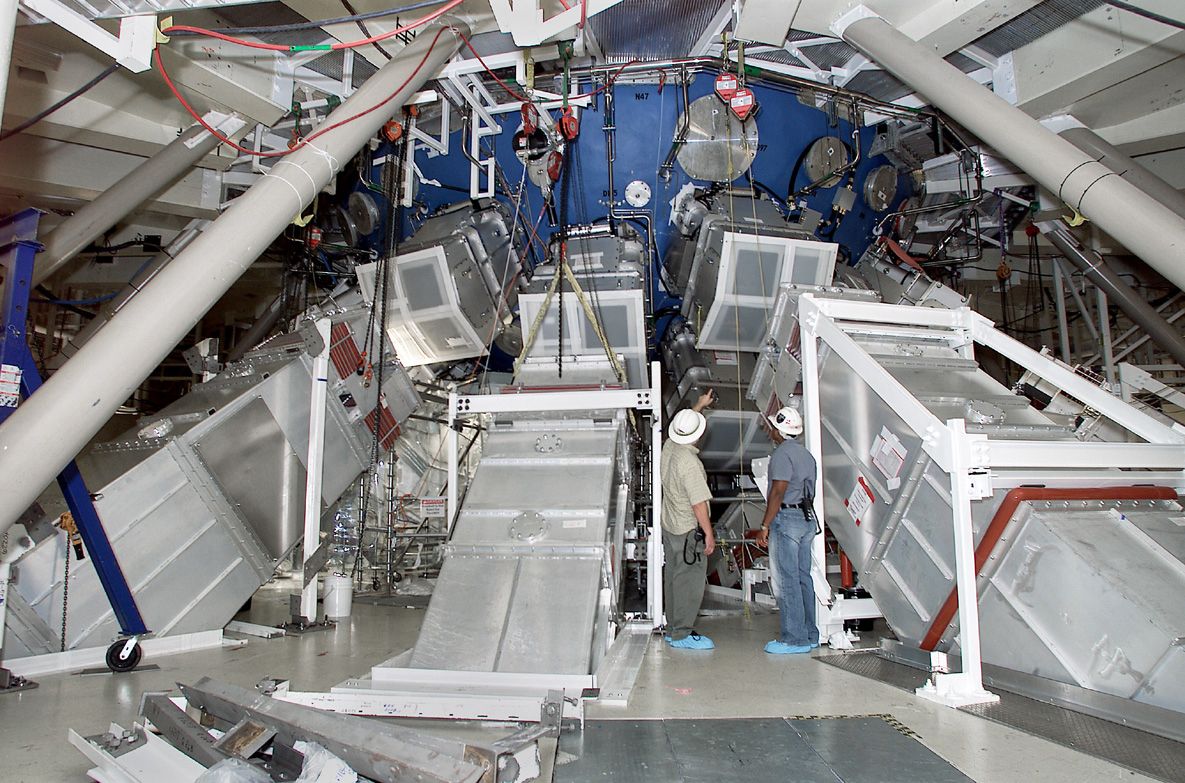
The reality is that moving energy consumption into the 21st Century will not happen with one grand discovery, but a microcosm of intermediary ones. Powering The Future provides some exciting insight into the body of research and creativity being applied to alternative energy sources. Many communities are powering themselves through clever solutions, such as Japan generating solar energy in outer space and then beaming it to Earth, or New York City harnessing wind energy from tidal waves in the East River. No role is rendered more important in this documentary than that of private organizations and academia in leading innovation and discovery. Bay Area-based Makani Power specializes in capturing and storing high-altitude wind for abundant power and energy. Caltech University solar electrochemist Dr. Nate Lewis has invented a thin coating of paint containing chemicals that catalyze the sun’s energy for power. Paint your roof, get free solar energy! In fact, just today, General Electric announced a $200 million smart grid contest for cleaner and more efficient electrical grids. The California-based X-Prize Foundation has even gotten in on the act, recently announcing a $10 million oil spill cleanup challenge.
Even those that consider themselves knowledgeable about environmental issues and research and technology of clean energy will have a lot to learn from Powering The Future. The special does an exceptional job of laying out the complex science behind concepts such as fusion and large-scale electrical grids for a lay audience to understand, while not glossing over current research in industry and academia. Moreover, rather than approaching the issue with the typical heavy-laden, moribund fatalism one often finds in these specials, Powering The Future leaves one feeling hopeful about the range of innovation happening at all levels worldwide, and the remarkable commitment of both academic labs and private companies for tireless discovery. It is this very entrepreneurial, resilient, and utterly human, attitude that will power our future more than any fossil fuel ever could.
Powering The Future premieres on the Discovery Channel on Saturday, July 17, 2010 at 8 PM ET/PT.
Finally, we encourage you to read to our exclusive one-on-one interview with Dr. M. Sanjayan, lead scientist at The Nature Conservancy, as we expand the energy discussion of the mini-series to global solutions, his thoughts on the oil spill crisis, and ways that we can impact our dependence on fuels right now.
ScriptPhD.com: Joining us today is Dr. M. Sanjayan, who is the lead scientist at The Nature Conservancy. He has a PhD from UC Santa Cruz, and is the author of “Connectivity Conservation.” His articles and appearances range from the most prestigious scientific journals to popular media such as The New York Times, and Vanity Fair and TED Talks. Thanks so much for joining ScriptPhD.com!
M Sanjayan: You’re welcome, thank you!
SPhD: It’s impossible to have a conversation about the nexus of environment and energy without addressing the oil spill afflicting the Gulf Coast. Is it safe to call this THE environmental catastrophe of our generation?
MS: Well, the generation’s not over yet. From the time of my recent memory, this has been one of the bigger wake up calls we’ve had.
SPhD: Why do you feel that way?
MS: It happened at our doorsteps, it is impacting a couple of industries that are hugely important to the United States. About a third of all the seafood you eat comes from the Gulf. About an eighth of the oysters you eat come from the Gulf. It’s a massive industry for fisheries and it also supplies about a third of all the gas that goes to heat up your house. So the Gulf is a pretty important place for America at our doorstep or seastep.
SPhD: Well, see, there’s one of the conundrums that I feel lies at the heart of this mini-series. If we take the Gulf Coast example, our President (Obama) is certainly no foe to environmental causes, and yet even he concedes that stopping offshore drilling is not practical given our thirst for oil and energy consumption. What are your thoughts on this?
MS: Well the reason that energy remains such a telling topic for our documentary is that it’s present in our entire lives. Look, I’m a pretty informed consumer and scientist, and even I was shocked at how much energy I use and all the kinds of insidious ways that energy goes into everything I do. And so if you’re looking for the culprit, in some ways, the culprit is us, it’s our thirst for big oil and it’s our thirst for this unlimited supply of energy with no repercussions, which causes us to endanger our future generations. So, it’s very difficult to point fingers when it comes to this crisis in the Gulf, even though what happened there is clearly something that BP is going to be responsible for.
But once you step a little bit beyond that, you quickly realize that how we got here and what we depend on? Still fossil fuels. I mean, [this dependence] makes hypocrites of all of us, and I think that’s the hardest part about it. That’s why it’s not comfortable to talk about, and that’s why it’s so important that we have a thoughtful dialogue about it in this country. And that’s what the show tries to do. I mean, we are addicted to just one form of energy but guess what? There’s so many other forms of energy just waiting there to be tapped. But none of them are going to come without a cost.
SPhD: In speaking about this mini-series, one of the things I adored about the first installment is that it really avoided the gloom and doom that you find typical in stories and shows pertaining to energy. Rather than dwelling on the enormity of the challenge posed to scientists, it actually made me feel hopeful about the creativity and discoveries that ARE actually out there already! Do you feel the same way?
MS: I really do, and I think that that was a conscious decision. When you talk to innovators and the people looking for the so-called “silver bullet,” you realize that Powering The Future talks to some really excited young people who are on the cusp of making gigantic breakthroughs. It’s a really sensitive section that you get carried along with. You don’t want to avoid the consequences of what we will look like if we reach 2015 with 22 kilowatts of energy needed to power our lives and all of that coming from fossil fuels. That will be a disaster and there’s no way to spin that. But we wanted to do a show that allows you to see the possibilities. People can only deal with so much – you have to give them a positive direction.
SPhD: You just mentioned the “silver bullet” – that leads perfectly into my next question. So based on your work, your travels and the research you performed in putting together this documentary, will we see the so-called “silver bullet” in our lifetimes? And if so, what are the commitments that must be made on an international level to see that happen?
MS: I wish I could tell you that there was a silver bullet and that I’ve gained a glimpse of it. I was looking for it, and I wanted to see it, and I wanted to believe in the idea of it. You’ll see that in the show. The truth is it’s more like a silver buck shot. There are lots of smart people coming up with lots of cool ideas. Some of them will go into practical use, and will be implemented on a large scale. So, there’s a lot of hope, but I don’t think it’s as simple as saying that there’s one solution that will solve it all. Now, you never know. You could see a breakthrough that happens.
The important thing is – imagine if we lived in a world where everything and everyone was completely free and available. It doesn’t mean that war and hunger and all these other things go away. There are other limiting factors that we could run up against. So, in some ways, we really want to leave it as a silver buck shot approach, because each solution also has some level of problems.
One of the more interesting [approaches] that we saw was high-oxygen kites being flown off of the San Francisco California coast. They’re really cool! You’ve got these giant kites that basically aeroform. They’re like wings of planes that fly a thousand, two thousand feet up [in the air]. And the wind blows through them, and they generate power, which then comes down a pipelines, shoots through a wire down to the Earth. What’s neat about it is when the wind drops, the power goes back up from the grid and so it stays up like an airplane. Or smart cars that you can plug into the grid, which allows you to start the car, but the car also acts as a [simultaneous] battery for the grid. Or the FULLY electric Coda vehicle that will go on sale later this year in California that will give you 100 miles. What’s amazing about the Coda for me is when you get into the car, it looks perfectly normal. It’s ordinary looking – you wouldn’t even know it’s electric.
SPhD: Well, I know one of the causes that you’re very passionate about, and have written about extensively, is poverty and coservation. On the one hand, it’s wonderful to see so many people climing out of poverty in China and India, Southeast Asia, also in Central and South America. On the other hand, with this mobility comes tremendous energy usage and environmental devastation. How do developed countries balance fostering this growth, yet holding these countries accountable for their emissions, for example through cap and trade systems?
MS: You know, people just want a better life and that’s just the truth of it no matter where you go. What is surprising, and it even shocked me, was the disparity in energy use between the Western world and countries like India or places in Africa. For my lifestyle, I use between 120-180 100-watt light bulbs’ worth of power all the time. So, about 18,000 Watts of power to power my life. The thing is, if you go to Asia, the average Asian uses about fifteen light bulbs for their life! And the average African even less – five or six. It’s an enormous difference in quality of life. And they want it to be better. There’s more people joining the middle class in India than the entire population of the U.S.
The best way we can help these countries make the transition is through economic stability, meaning better lives, happier lives, less war. Because there’s more stability and more trade. So I think the best thing that we can do is really spur innovation and development, leapfrogging technology. The partnership that we have with China, for example, to make batteries, that are a great collaboration, for the Coda car. So the Coda is made in Los Angeles, but the battery is made in China. Poor countries cannot simply abdicate their responsibilities. They’re the ones that are going to be the hardest hit by climate-induced changes. And so they have to play a role as well.
SPhD: Absolutely! Speaking of innovation, in the first installment of The Energy Planet, there are a lot of academic labs and private companies that are innovating green technology even as a lot of world governments are wringing their hands about solutions. How do you feel about some of these private companies, like Tesla Motors or the X Prize foundation here in California in enacting innovation and spurring real change?
MS: So in making Powering The Future, I thought we’d spend most of our time talking to governments – and we do do that to some degree. Energy ministers in China, and admirals in the Navy. But we found that the most passionate advocates were the private industries and the private sector. To me, that’s a very Western philosophy, but it does apply nicely. I think it’s of huge importance. Look at these big revolutions that have happened in our lifetime, like the digital revolution, and now this new revolution that’s happening with space technology or in human genetics. Governments have to play a role, and that role can be very instrumental, both in thinking about the public good and in spurring innovation through subsidies or tax breaks.
But… over and over again, I go to conferences and I come away with this notion that governments don’t lead. It’s people who lead, and the governments will follow. That’s why things like X Prize and these early innovators being out there, maybe a little ahead of the game, are hugely important. It’s exactly how the technology revolution happened with the internet, and I can see that happening with energy. It’s more complicated with energy, but it’s hugely important indeed.
SPhD: So, recycling is one of the quickest, simplest and most impactful ways that we can save energy and protect our planet. I grew up in Seattle, a very ecologically-minded city, where recycling was not only encouraged but ubiquitous, so it was ingrained in my life from an early age. But as I travel around the country, it’s shocking to me how many places there still are where the concept is foreign to the point of being anathema to the way people lead their lives. Do we go the way of the Japanese government, where you actually get fined for not separating your garbage, and they end up collectively recycling or composting anywhere from 70-80 percent of their trash, or do we provide some kind of an incentive?
MS: I didn’t realize how important that part is to solving the energy puzzle. But, one of my favorite parts of the mini-series was when we were visiting the Empire State Building, and this guy who does all the retrofitting for the building says to me “The greenest buildings are the ones that are already built.” And what he’s saying is instead of building from the ground up, you’re taking what’s already existing and recycling it. So recycling, whether on a grand scale – retrofitting a building or a rooftop garden – or on a microscale, in your own apartment, is really important.
I live in Montana right now, and it’s a great town really, but it’s still really hard to recycle there. Especially glass. And I asked them about it and the truth of the matter is that the costs to ship that glass are so expensive, that those costs prohibit recycling on a small scale in my town. It’s a complicated question. We should encourage people to recycle and to encourage their local governments to enable recycling. But sometimes you realize that it does come down to arguments of cost. As long as energy is cheap, artificially cheap (which it is), it makes it impossible to enable recycling and other programs that can make a difference on the scale which you and I would like to see happen.
SPhD: You literally traversed the globe to put together this special and you met everyone from scientists, environmentalists, oil workers and ordinary people. Can you recall for us one moment – any moment – from these journeys that really struck you and made an impact?
MS: China was pretty incredible. Because I never expected to spend that much time in the cities in China. Usually I’m going out to the countryside. There really was one moment that was very amazing to me. We went out to a little village outside of a town called Rizhao, which is China’s solar city. A city of about 3 million people that’s gone completely solar in most ways. So we went to this tiny little village right outside it, and walked into a tiny little house that a woman owned with her family. There’s five people in the family, and two rooms in the house, and a tiny little bathroom/kitchen.
She had a new shower that she really wanted to show me. It was basically a pipe that went from her room into a little private shower area. And it has hot water now because of a solar thermal unit that she’s put up on the roof. And she’ll have it paid off in five years because of the savings. She told me that in the winter, she used to endure a six-mile walk to a public bath house to have a hot shower. And now this [solar cell] completely changed their lives. Meeting her, I understood that the energy revolution is not just for the affluent and the well off, but rather it’s for all scales of life. The other thing I got in China was a lump of coal – and I actually have it sitting on my desk. And whenever I look at that lump of coal, I realize what the need is all about.
SPhD: Well, I really appreciate you joining us and giving us some insight into your travels and work.
MS: I guarantee you after watching this special, you’ll never eat a hamburger or fly a plane the same way again.
~*ScriptPhD*~
*****************
ScriptPhD.com covers science and technology in entertainment, media and advertising. Hire our consulting company for creative content development. Subscribe to free email notifications of new posts on our home page.
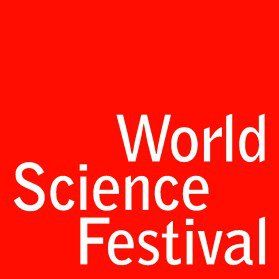
We have truly saved the best for last! ScriptPhD.com’s coverage of the 2010 World Science Festival in New York City concludes with panels ranging from the secrets hidden in our underwater oceanic wonderland (especially apt as we clean the worst oil spill in history), a panel on the hidden dimensions of our visual world, and a behavioral panel that sheds light into how animals and humans process thought. In addition, we provide a short video of star-gazing New Yorkers who came out to see the James Webb telescope last week. Our correspondents were the amazing New York City science writers Jessica Stuart and Emily Elert. Synopses and pictures of three extraordinary panels with the premier scientists of our time under the “continue reading” cut.
ILLUMINATING THE ABYSS: The Unknown Oceans — June 5, 2010
Under our oceans lie mountains many times higher than the Alps, valleys far wider than the Grand Canyon, countless volcanoes, and the largest waterfall in the world. There are thousands of species down there – the current known number is estimated to be around 230,000, but it could be as many as three times that, according to the Census of Marine Life. The oceans drive our climate and weather, and generate nearly 70% of the oxygen in our air. The one thing that life cannot exist without is water, and yet, we treat our oceans “like an infinite resource and a garbage can.”
A packed house gathered Saturday afternoon at the Paley Center for Media, for the panel Illuminating the Abyss: The Unknown Ocean. Jacques Cousteau’s grandson, Fabien Cousteau, a passionate ocean explorer in his own right, along with scientists Sylvia Earle, David G. Gallo, and David E. Guggenheim were the panelists, with moderator Bill Weir. Though the topics were diverse, ranging from the oil spill to personal submarine devices to unsustainable fisheries, all reverted back to the fact that we have so much left to learn about our oceans, and are destroying them more and more each day.
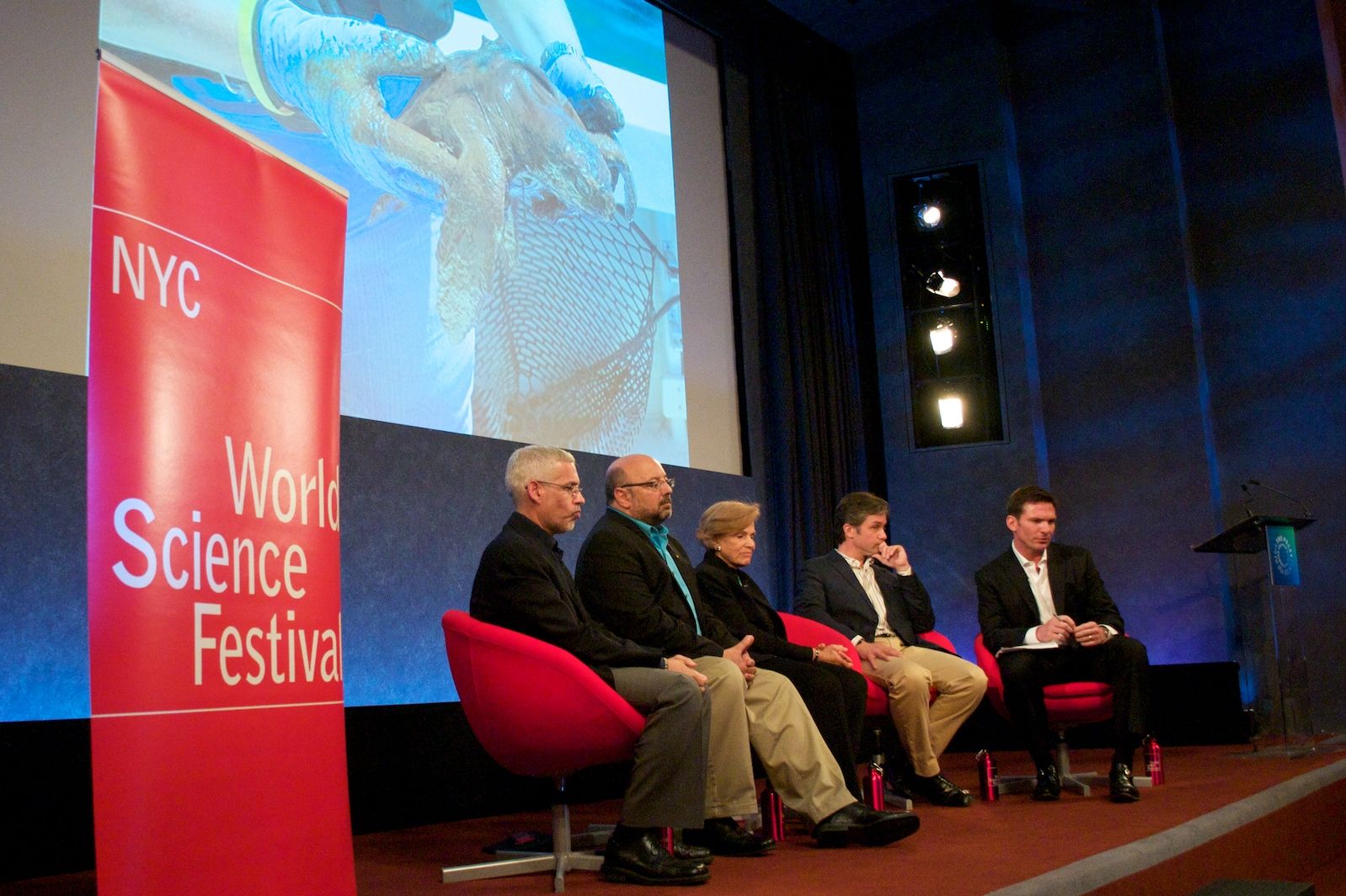
The presentation started with a tribute to Jacques Cousteau, perhaps the most famous explorer of our oceans. His films and adventures have inspired generations to take to the oceans to try to learn and preserve this most unique ecosystem. Unfortunately, this research is woefully underfunded – in the last 50 years, we’ve sent 12 men to the moon, but only 2 to the deepest reaches of the ocean. This lack of knowledge about the conditions and ecosystem in our waters is a big problem, especially given the current state of affairs in the Gulf of Mexico. As of Saturday, almost two million gallons of chemicals had been dumped in the Gulf to try to disperse the Deepwater Horizon spill. Earle called this action appalling, saying we “should not be pouring toxic chemicals into the sea without knowing the consequences.”
Guggenheim is also distraught by the spill. He studies the coral reefs in Cuba – nearly pristine reefs, with healthy ecosystems, that researchers were hoping would give us clues into why so many other coral reefs around the world are dying. Now, with the oil headed that way, they may not get the answers they’re looking for. Enough damage will be done in the Gulf alone, but if the Gulf Stream picks up the oil and circulates it down past the Cuban reefs, then up along the Atlantic coast and over to Europe, we’re looking at a problem of such magnitude that we won’t even know the full impact for many years.
Aside from the tragedy of the oil spill, we do constant damage to our waters through unsustainable fishing. Earle maintains that there is no such thing as “sustainable” commercial fishing. Guggenheim pointed out that we “manage” our fisheries as if they’re crops, like corn, that just grow each year, and we continue to harvest in greater numbers than the sea can replenish. There are proposals in the works to create AquaCulture – land based systems that could create a sustainable industry. Systems are already working in Asia, Australia, and Europe, and could be beneficial in areas like the Gulf, providing jobs and a big investment for the future to those who make their lives in the now decimated fishing industry. Aside from that, we have to start managing our oceans as an entire ecosystem, not as unrelated species that we just pluck out of the water and put on our plates. We don’t fully understand how everything is connected, but we know that if we continue to eat the large predators, like tuna and sharks, we’re creating an untenable long-term situation.
Fabien Cousteau said it best, succinctly reminding us that “There is no Planet B.”
To preserve our oceans, we must first learn more about them in-depth. To learn more, visit:
Mission Blue
Plant A Fish
Ocean Doctor
In addition to our written coverage of the 2010 World Science Festival, ScriptPhD.com took to the streets of New York City with a camera at the star-gazing event in Bryant Park last week. Dozens of amateur star-gazers gathered around the James Webb telescope on display, and we caught up with them to talk about what astronomy meant to them and why they were there. For a genuine feel of the Science Festival vibe, take a look at this video by Jessica Stuart:
Jessica Stuart is a writer, photographer and videographer living in New York City. Find her on her personal blog, and Twitter.
HIDDEN DIMENSIONS — June 5, 2010

“This is really about going beyond our senses,” said Brian Greene from the stage at “Hidden Dimensions,” an event at the World Science Festival Saturday night. The screen behind him (picture below) showed a grid of fluorescent lines with loops sitting on top, like rings balancing on a checkered table. The grid represented all of the dimensions we are aware of—the three that make up space, plus time—and the rings represented another, theoretical dimension.

This extra dimension is just one of six or seven that physicists like Greene think exist, though they are too small to be seen or directly detected by scientific instruments. The extra dimensions are a part of string theory, a mathematical idea that unites two conflicting branches of physics—general relativity and quantum mechanics—by proposing that the tiny particles in the universe are all part of miniscule, vibrating strings.
It sounds crazy. But then, so do a lot of things we can’t see or touch or hear. As an example, Greene showed an animation of a flat plane with a cube passing through it. If you lived only on that flat plane, you would see a shape-shifting shadow—a triangle that grows, becomes a square, and shrinks back into a triangle. It would be hard to make sense of, in a flat world, but adding another dimension—in this case, a third dimension, makes the whole picture a lot clearer. But “adding another dimension” to the way we understand the universe is not such an easy thing. Our fourth dimension, time, has been around for a while, but most of us still get a brain-ache from trying to understand what “space-time” actually refers to, or imagining the inside of a black hole.

Linda Henderson, an expert in twentieth-century art who was on the panel Saturday night, pointed out that, when this mysterious fourth dimension first came around in the late 19th century, the concept influenced movements in art and literature. Cubism, she said, is a good example of artists grappling with a new concept. Paintings like Picasso’s “Portrait of D.H. Kahnweiler” demonstrate these artistic wanderings into the new dimension. Though the painting is abstract, it represents a real idea. “It’s a painting that we can’t really say is only three dimensional,” Henderson said.
The invention of the x-ray machine, said Henderson, served as another reminder of the limits of our own senses. Displaying an early x-ray photograph on the screen, Henderson asked, “who can say there isn’t a fourth dimension, just because you can’t see it?”
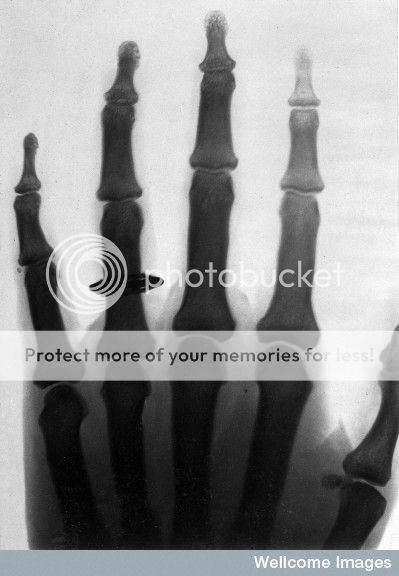
But Lawrence Krauss, a physicist also sitting on the panel, reminded the audience that ideas in math and art are different from science. “People want there to be more there than meets the eye,” said Krauss. While art and math can explore these ideas, Krauss noted, “there’s a huge difference between math and physics.” In other words, physics—like all science—requires theories to make testable predictions about the world, a hurdle string theory has yet to clear. Krauss recalled the words of Richard Feynman, one of the world’s most beloved physicists: “Science is imagination in a straightjacket.”
The challenge for physicists is to find a straightjacket big enough for string theory. In the meantime, we always have art.
ALL CREATURES, GREAT AND SMART — June 5, 2010
There were five panelists on stage at “All Creatures Great and Smart,” an event at the World Science Festival on Saturday afternoon, and each of them presented ideas that blur the clean lines people have tried to draw between the human and animal mind.
But it was panelists six through nine, with the help of number five, Brian Hare, who stole the show. Hare, an anthropologist, is interested in whether animals can develop theory of mind, the ability to think about what others are thinking about (otherwise known as the “I know you know that I know you know” phenomenon).

Humans aren’t born with theory of mind, but they develop it at a very young age, said Hare. “By the time your kid is four, they’re very good at deceiving you,” a clear sign that they can think about which facts you may be keen to—and which you may not be.
As a graduate student, Hare performed an experiment with chimpanzees, using the same type of test used by child psychologists. He put two containers upside-down on the floor in front of each chimp, hid food under one (children get toys), and then signaled the food’s whereabouts by pointing, standing closer to one bucket than the other, etc.
The chimps did not take the hint. They did not, it seems, have theory of mind.
Then, Hare began to think about how good his dog was at following social cues (and using them to its advantage), and decided to try the same experiment with dogs. His advisor was at first skeptical. “He said, yeah, yeah, everyone’s dog does calculus,” Hare remembered. But Hare ended up conducting his experiment, and on stage at the World Science Festival, he offered to repeat it with four volunteers. The first three dogs, Bela, Sammy, and Molly, were angelic subjects; they sat upon instruction, and awaited permission to retrieve a piece of cheese that Hare laid down a few feet away.

And when Hare put a piece of cheese under one of the buckets and then pointed to it, the dogs followed the cue immediately.
This spotless confirmation of Hare’s canine-theory-of-mind was tarnished, however, by the fourth subject, a spirited Burmese Mountain dog named Georgie. It wasn’t that she couldn’t follow cues—she simply took a first-come, first-serve approach to the treats, preventing Hare from testing his hypothesis. As Georgie’s owner pulled the reluctant pet from the stage (she wanted to stay with the cheese), Hare pointed out that Georgie had gotten everything she wanted while on stage.
Which, at the end of a show about how animals are like humans, left me wondering how much humans may be like animals: are we all either blunt or clever?
Emily Elert is a freelance science writer living in New York City. Follow her on Twitter.
Follow the World Science Festival on Facebook and Twitter. All photography ©ScriptPhD.com. Please do not use without permission and credit.
*****************
ScriptPhD.com covers science and technology in entertainment, media and advertising. Hire our consulting company for creative content development.
Subscribe to free email notifications of new posts on our home page.
]]>
